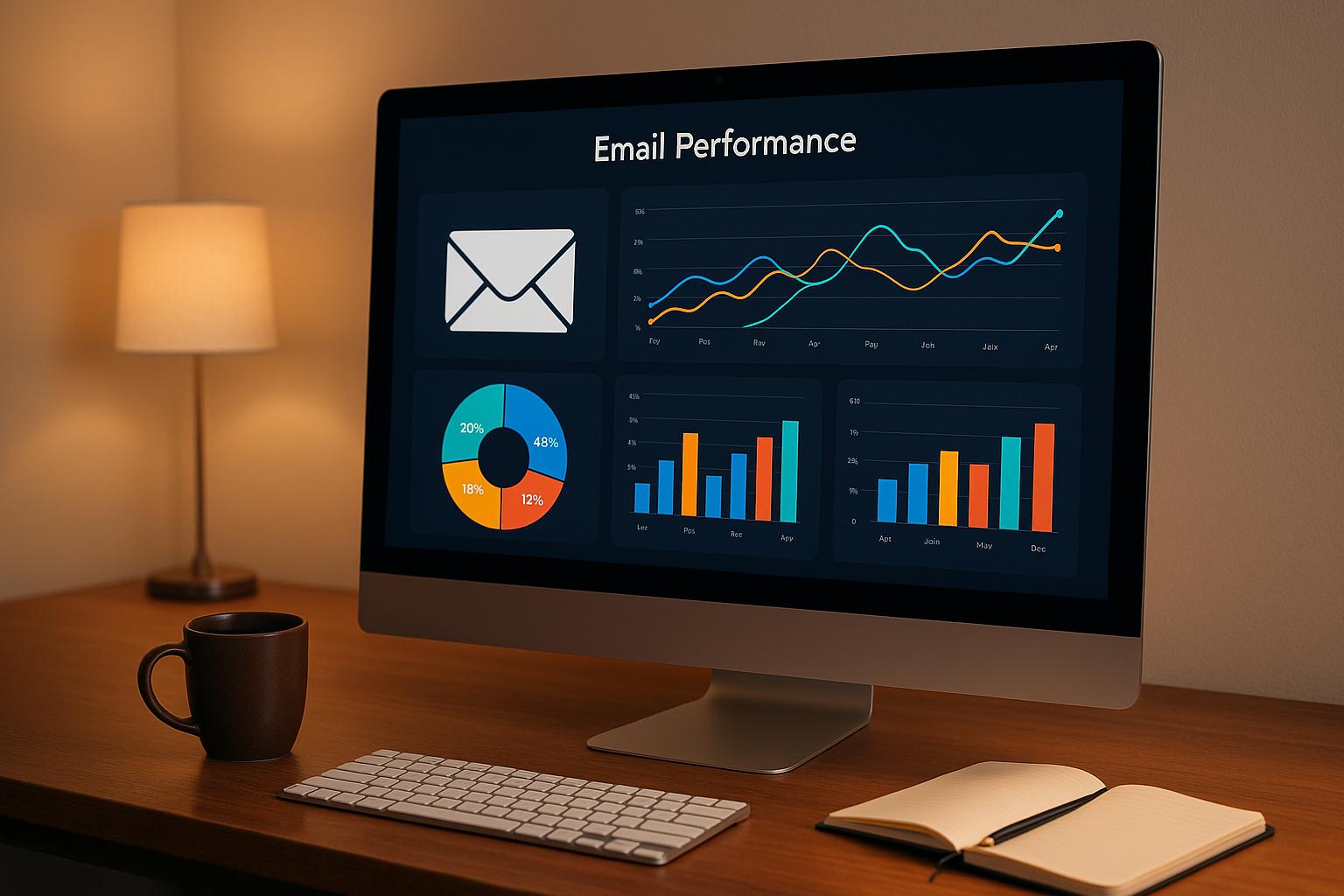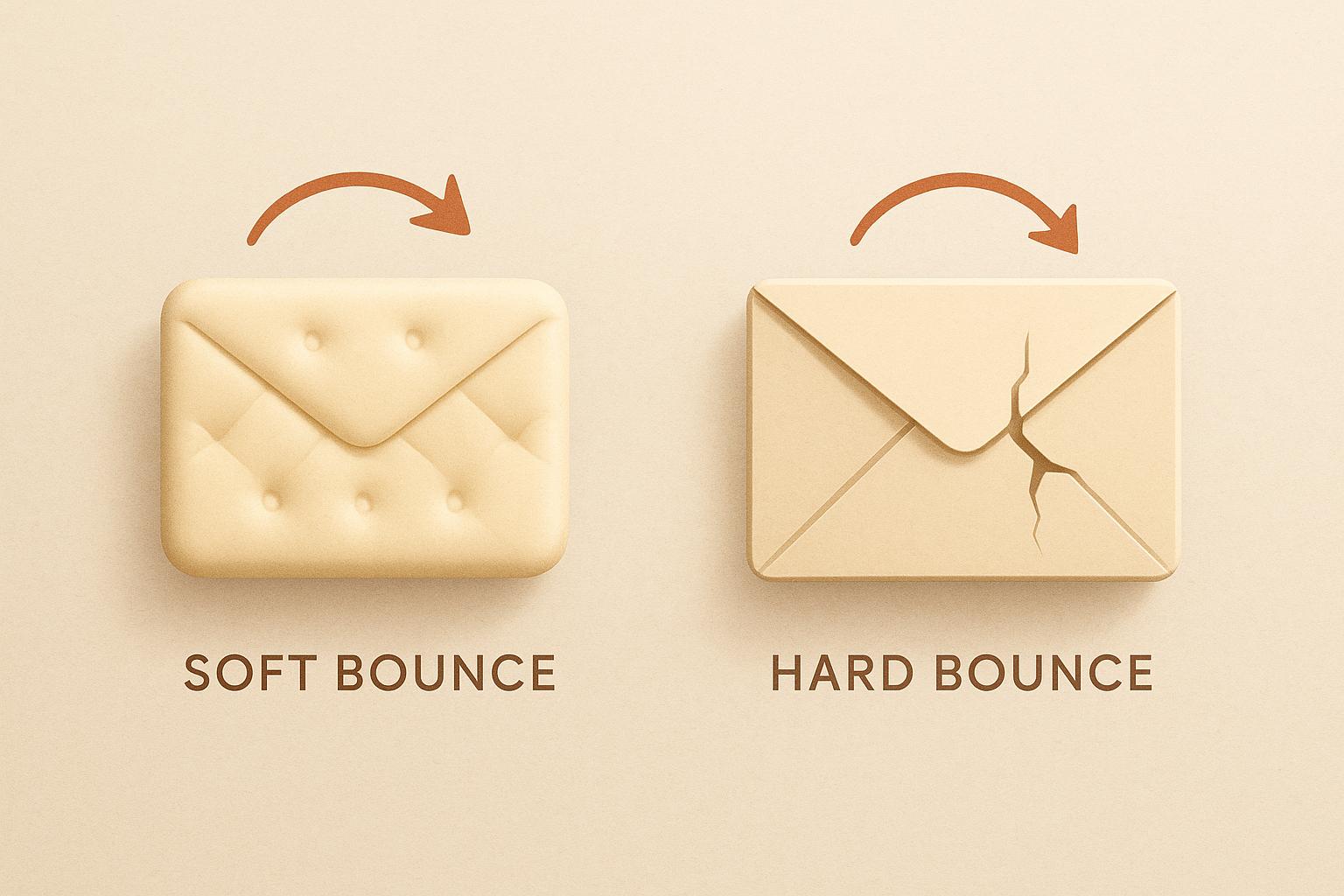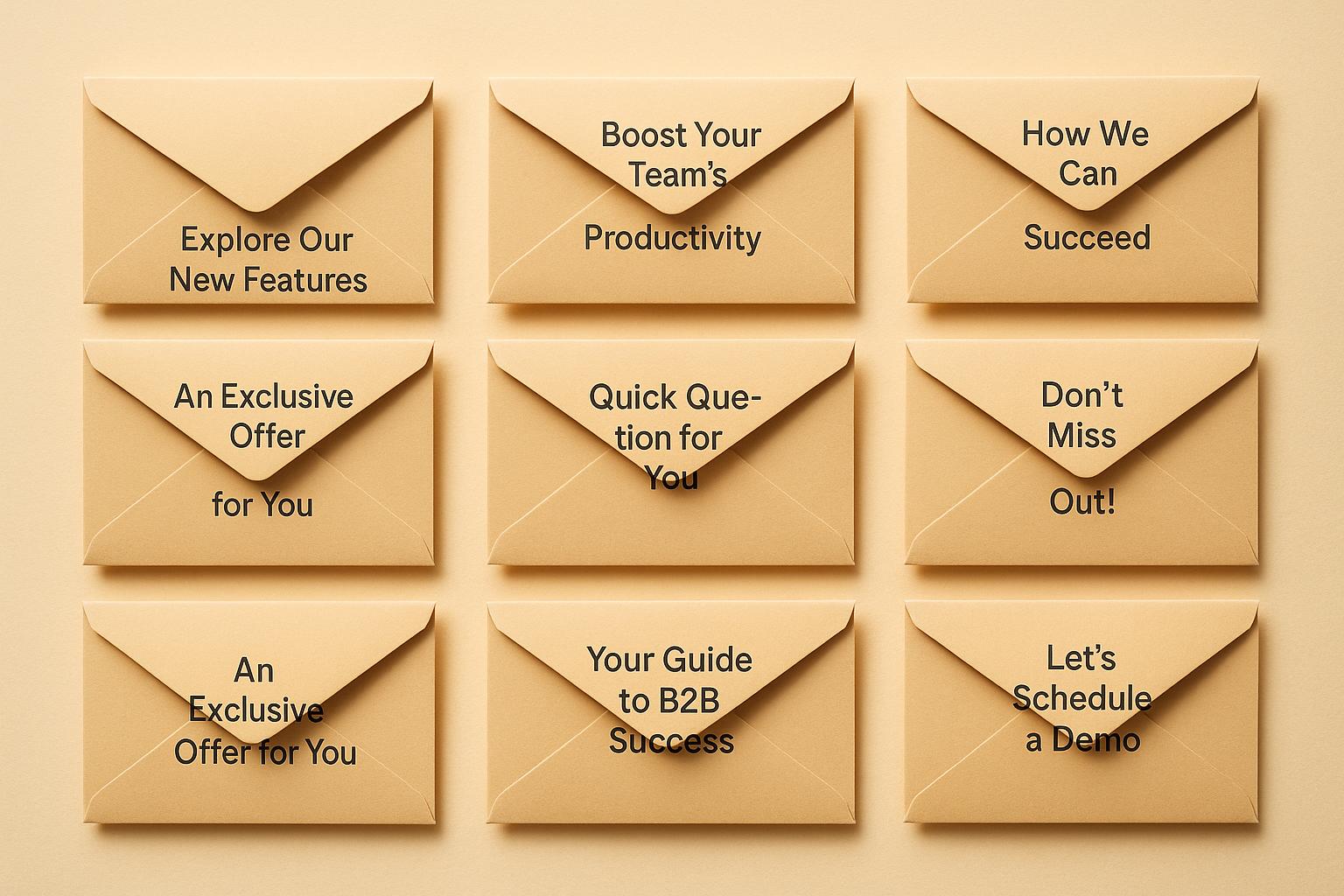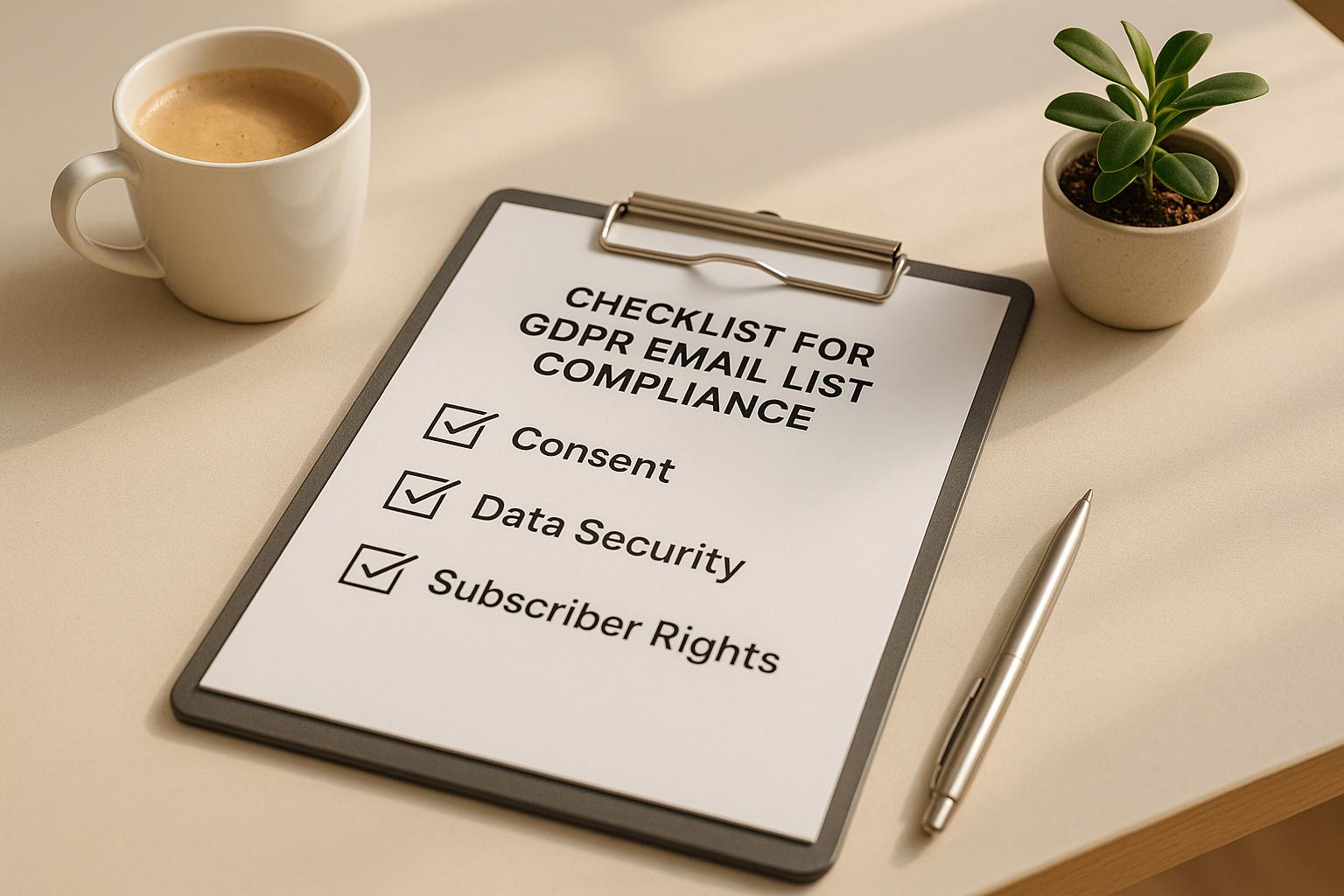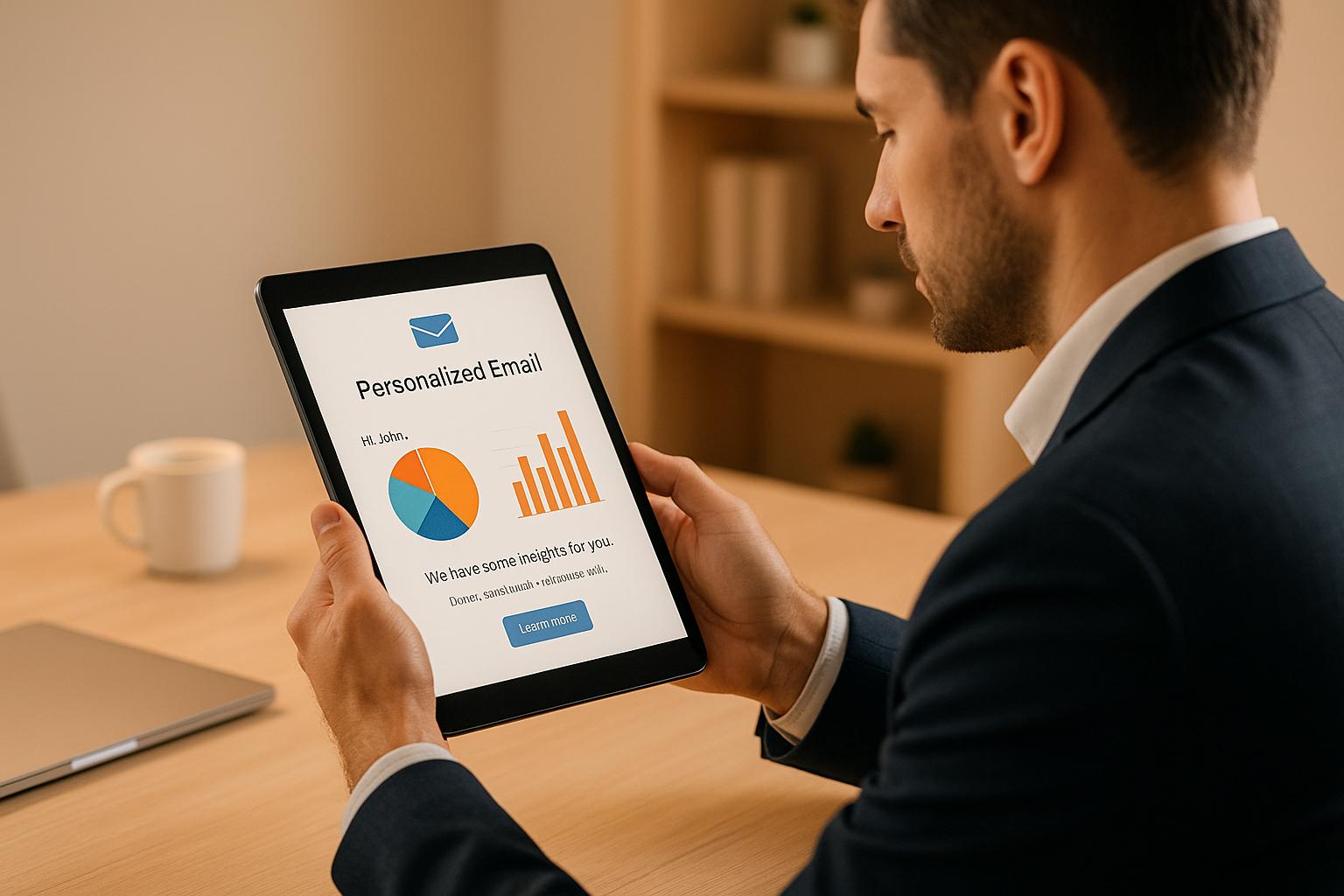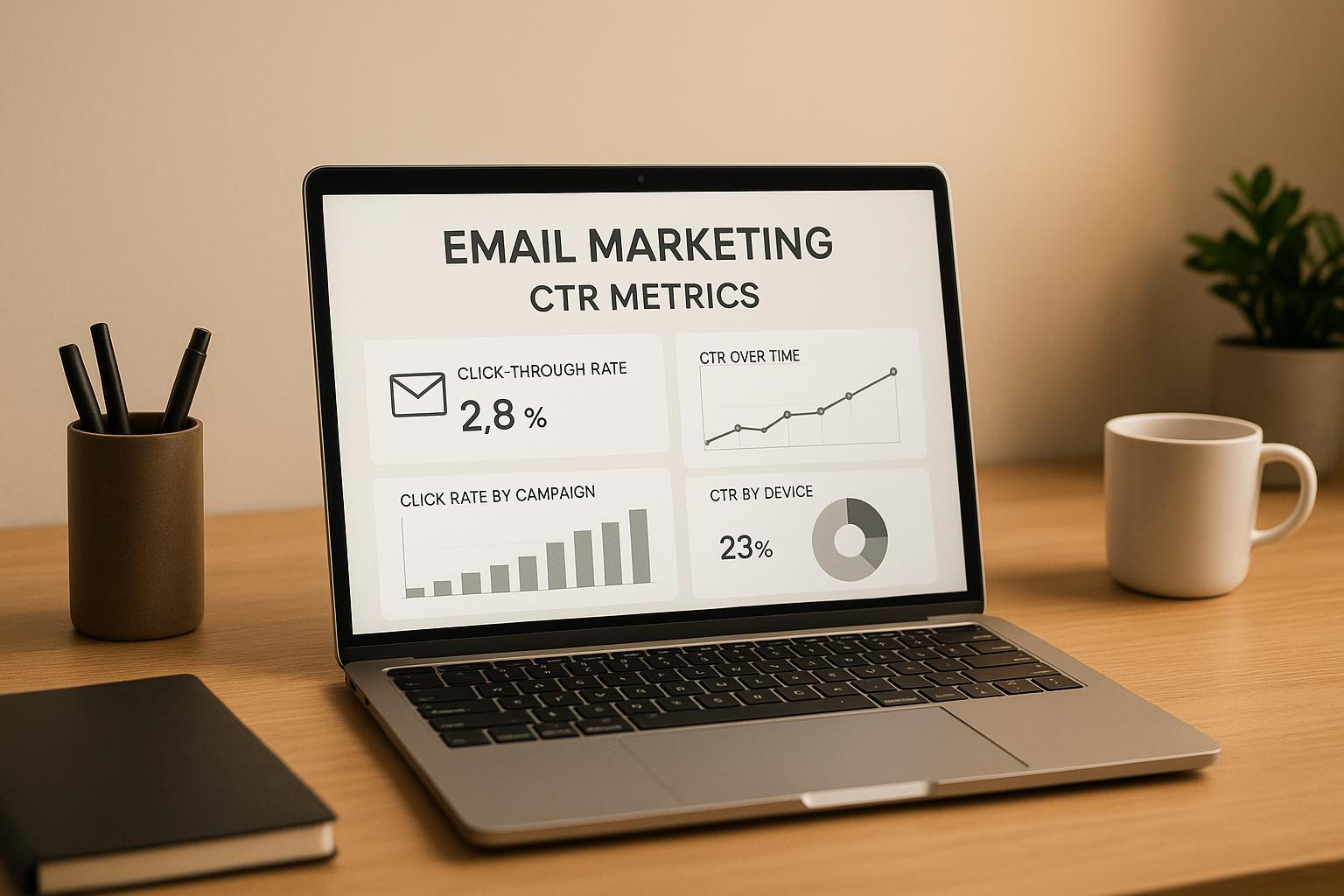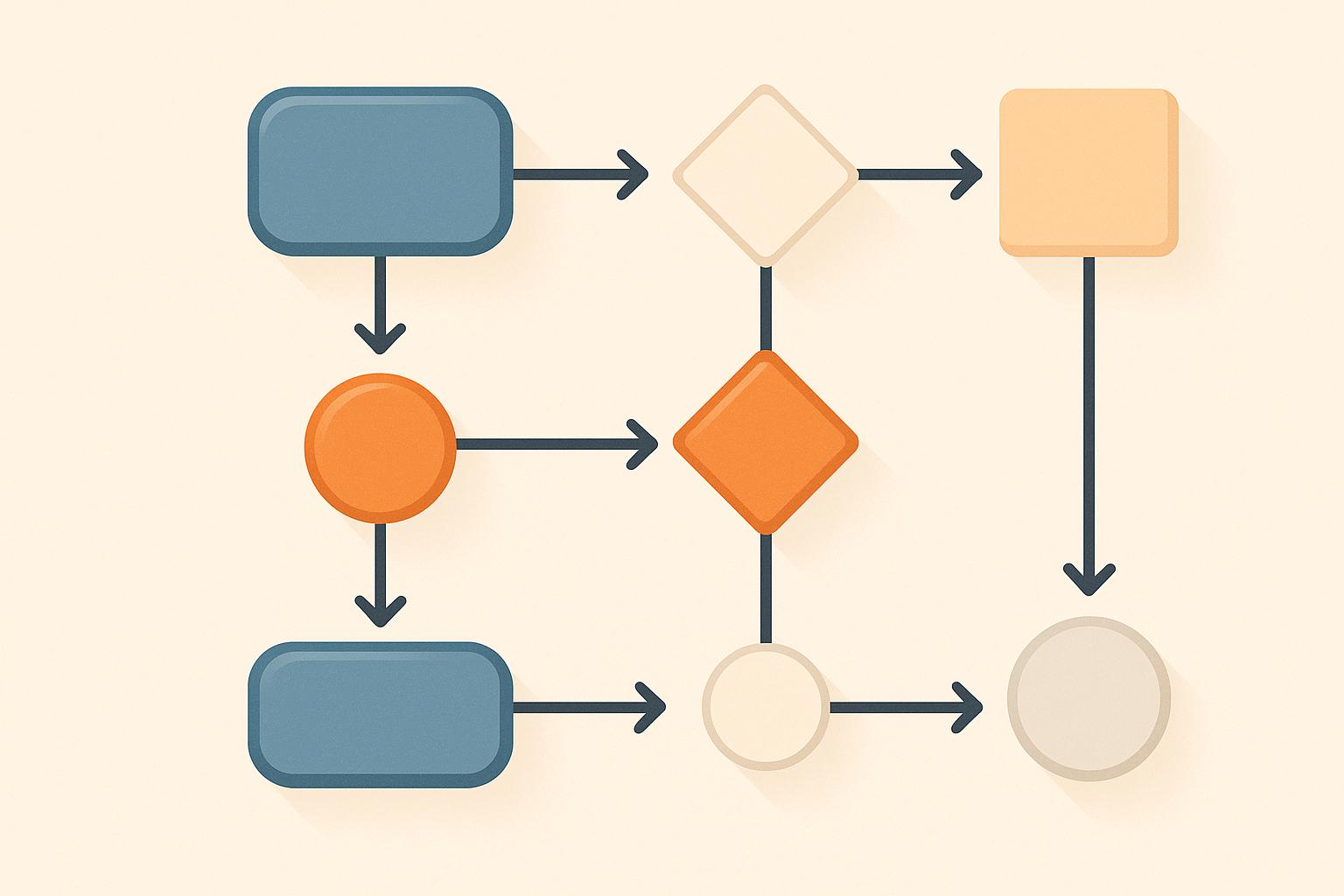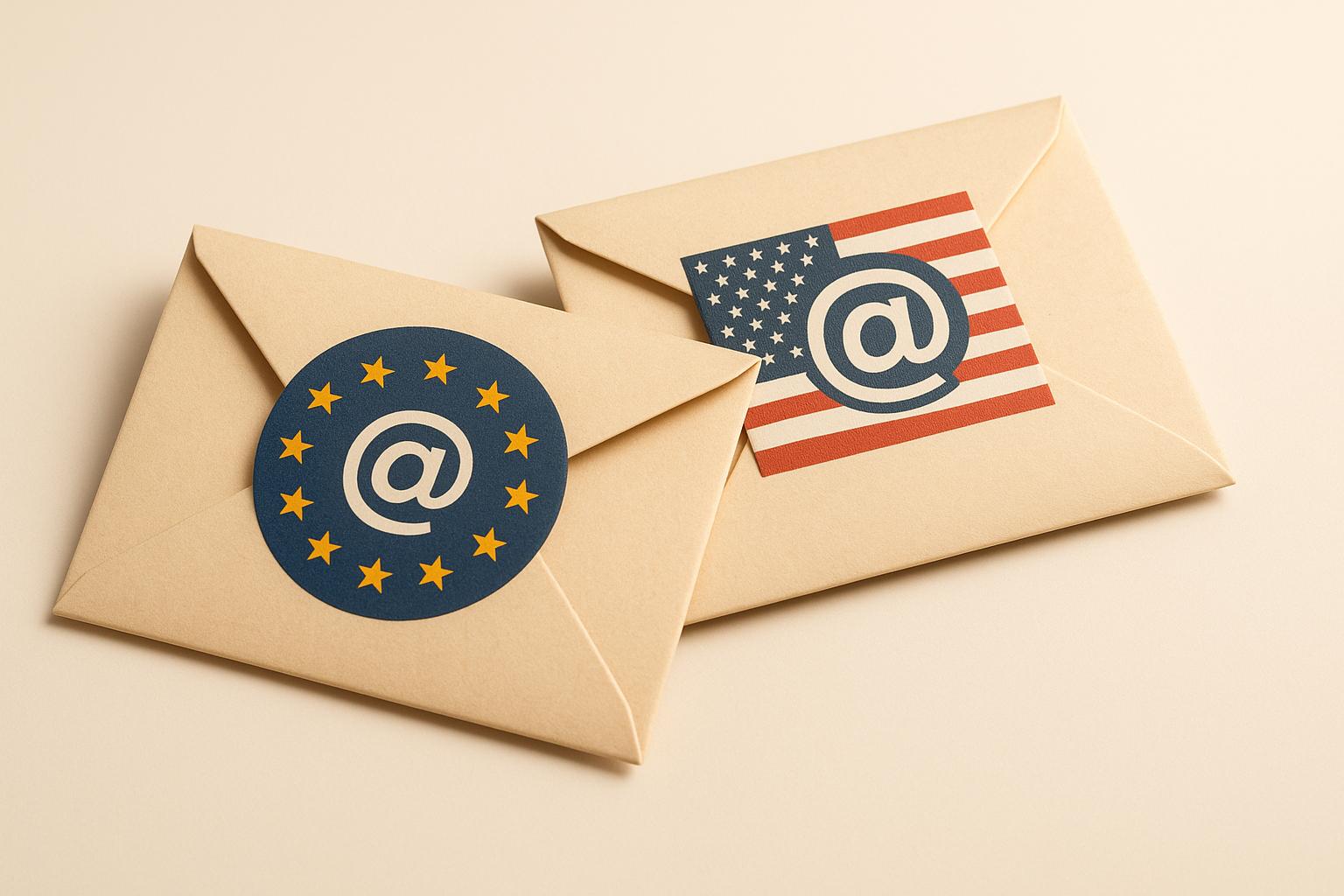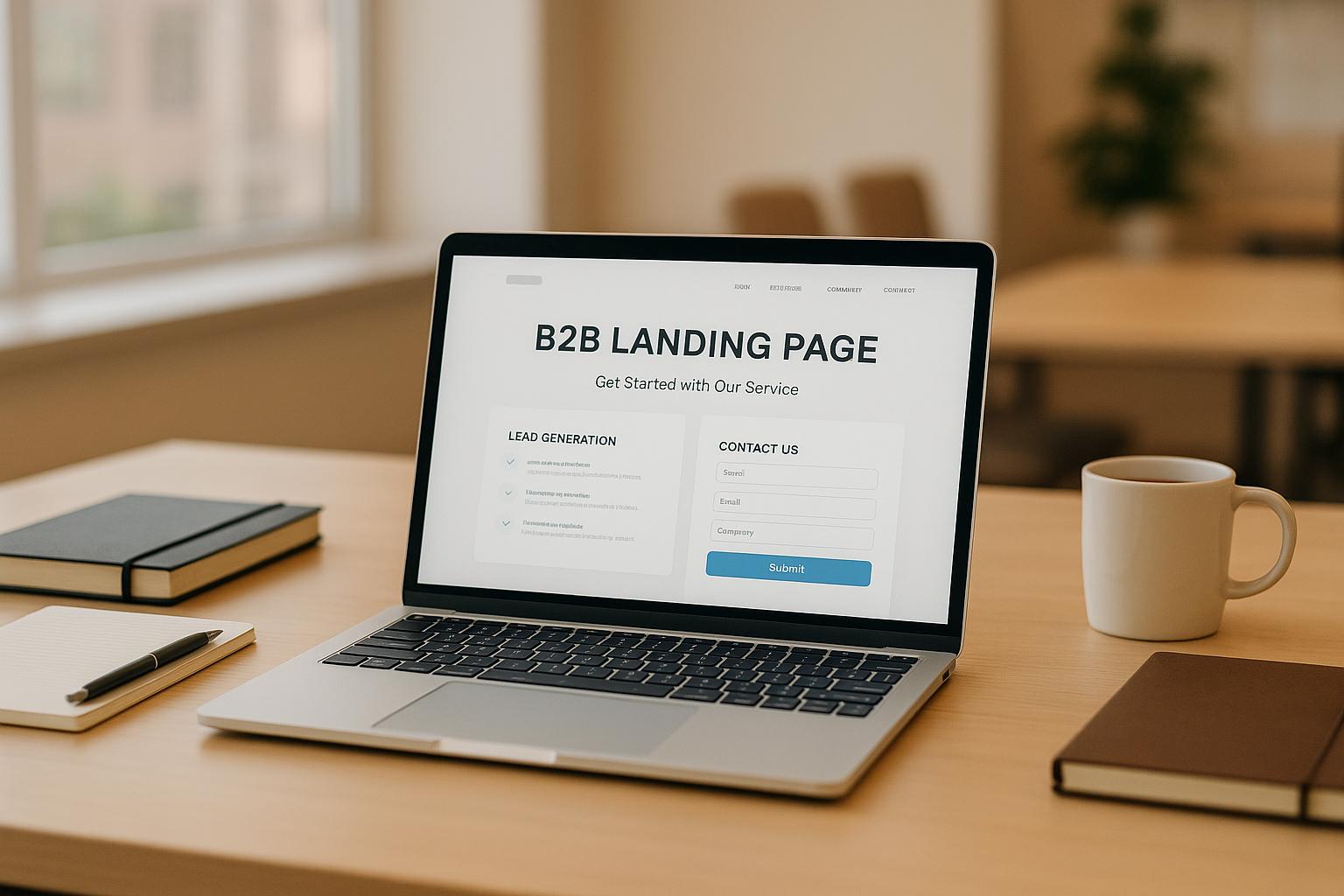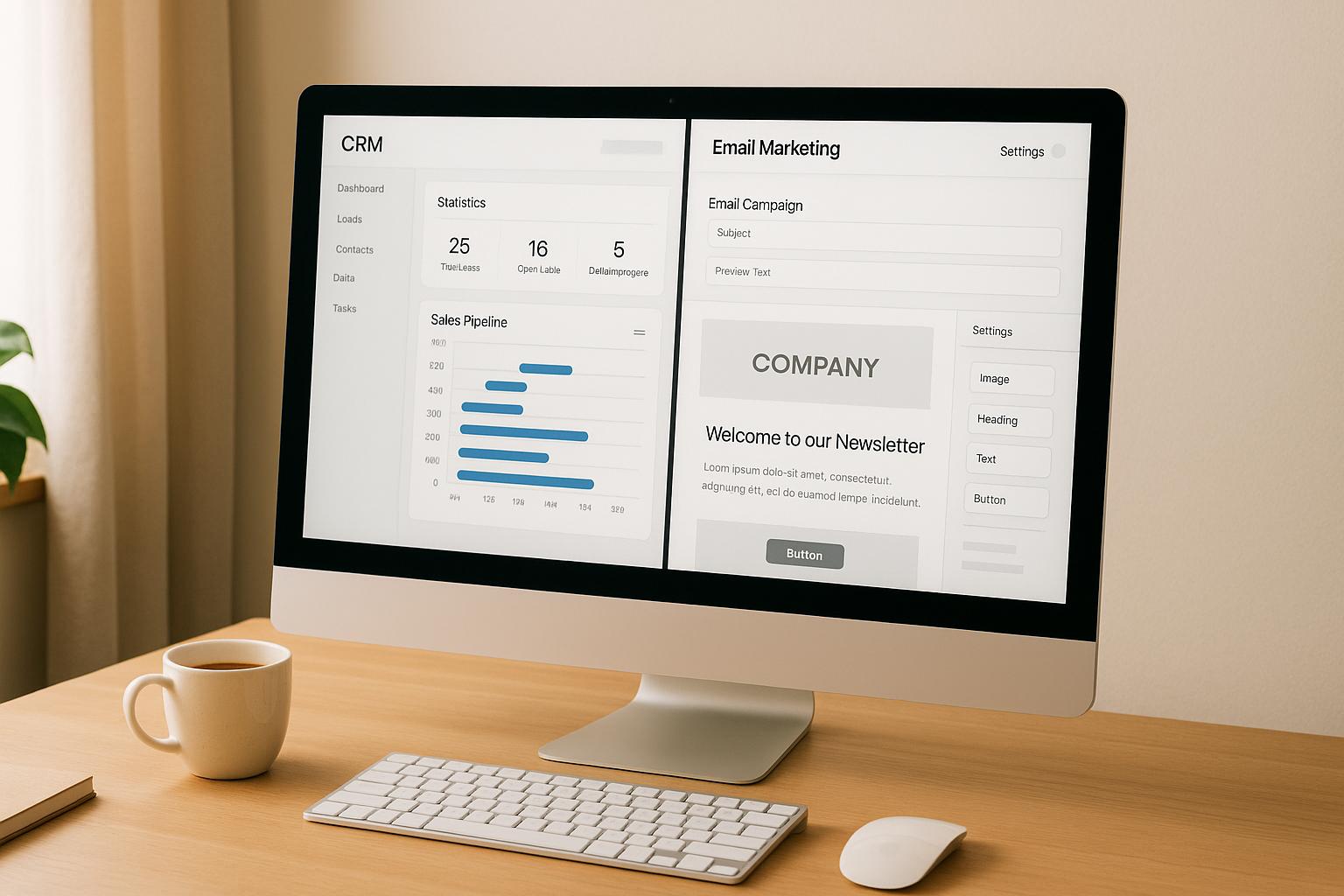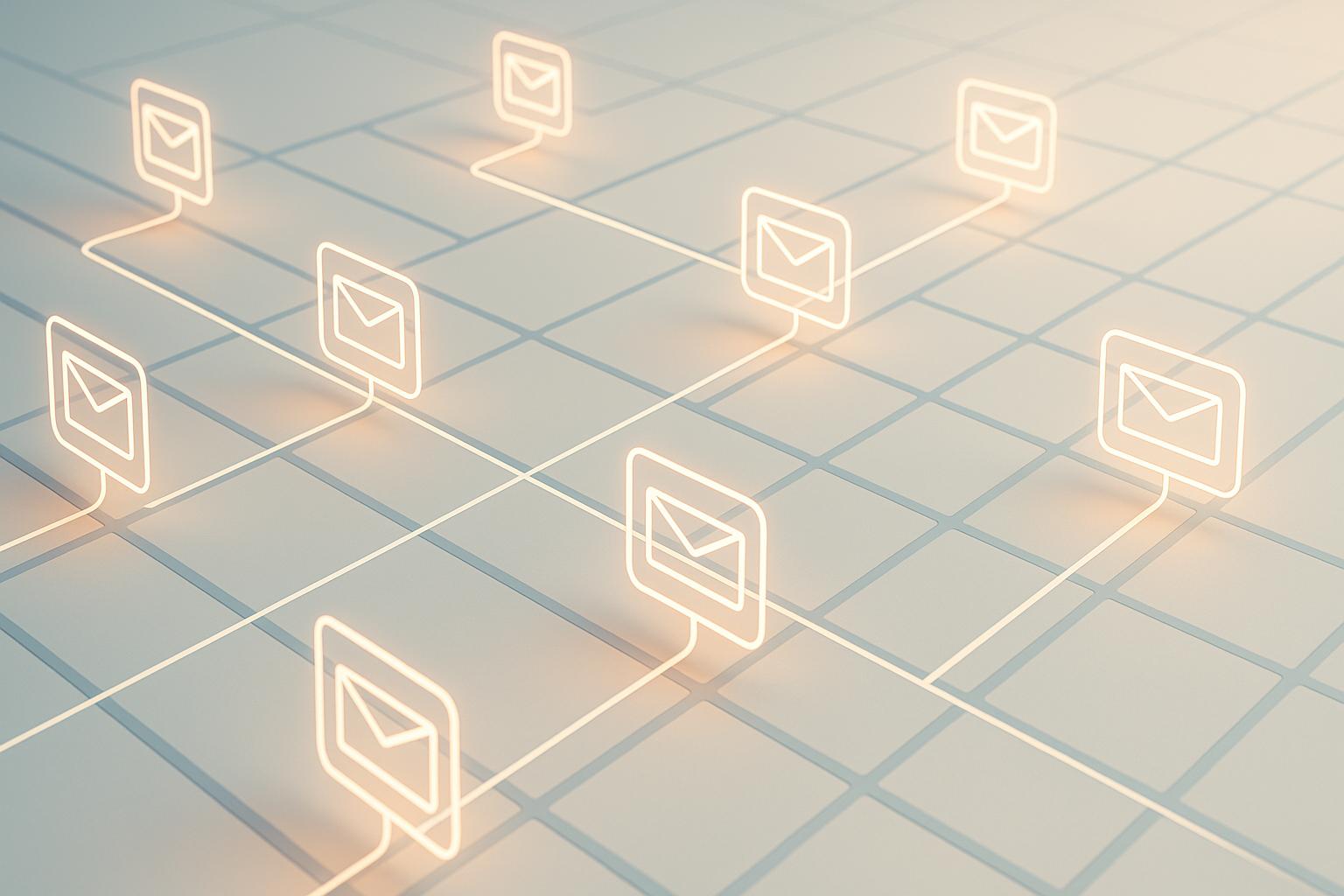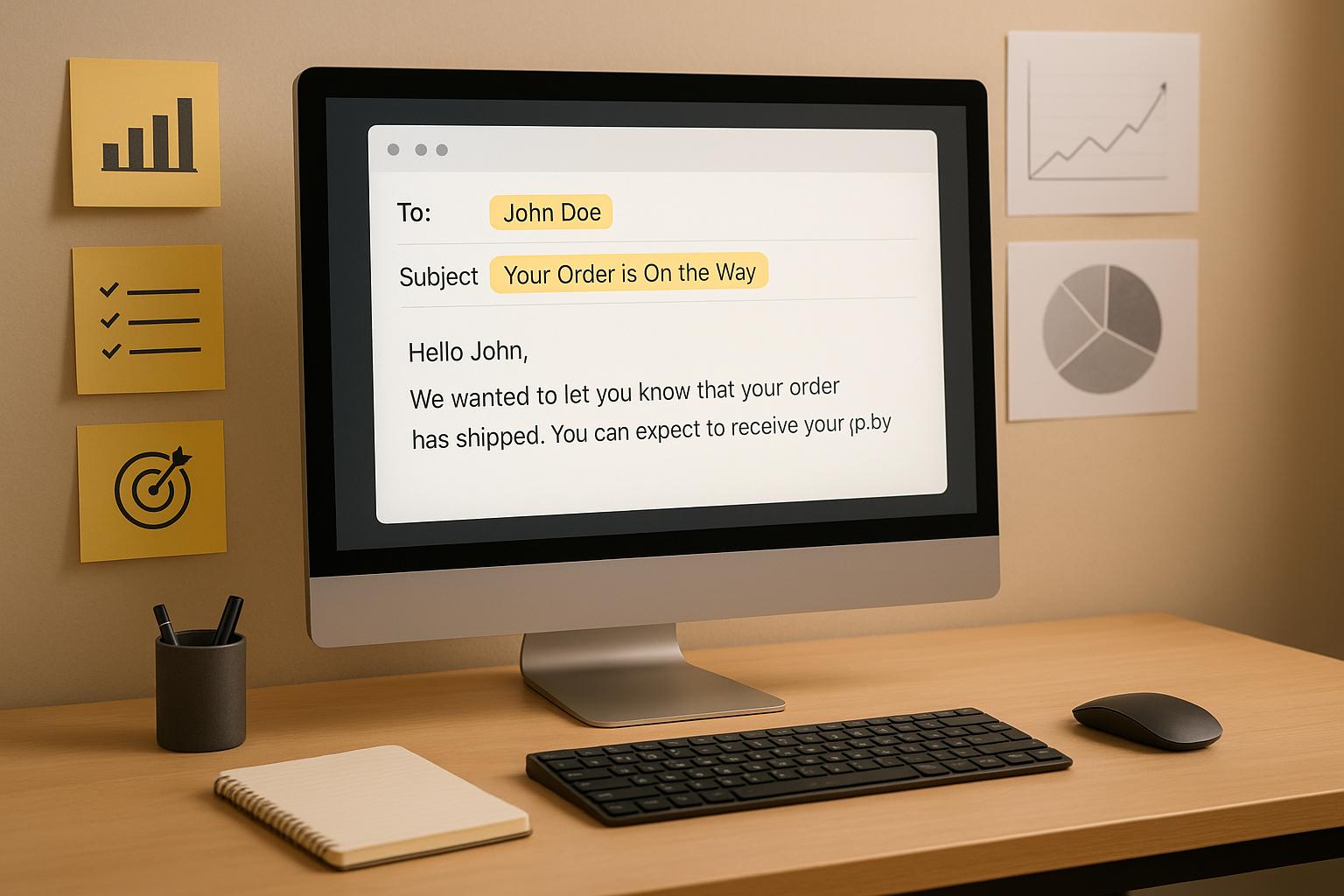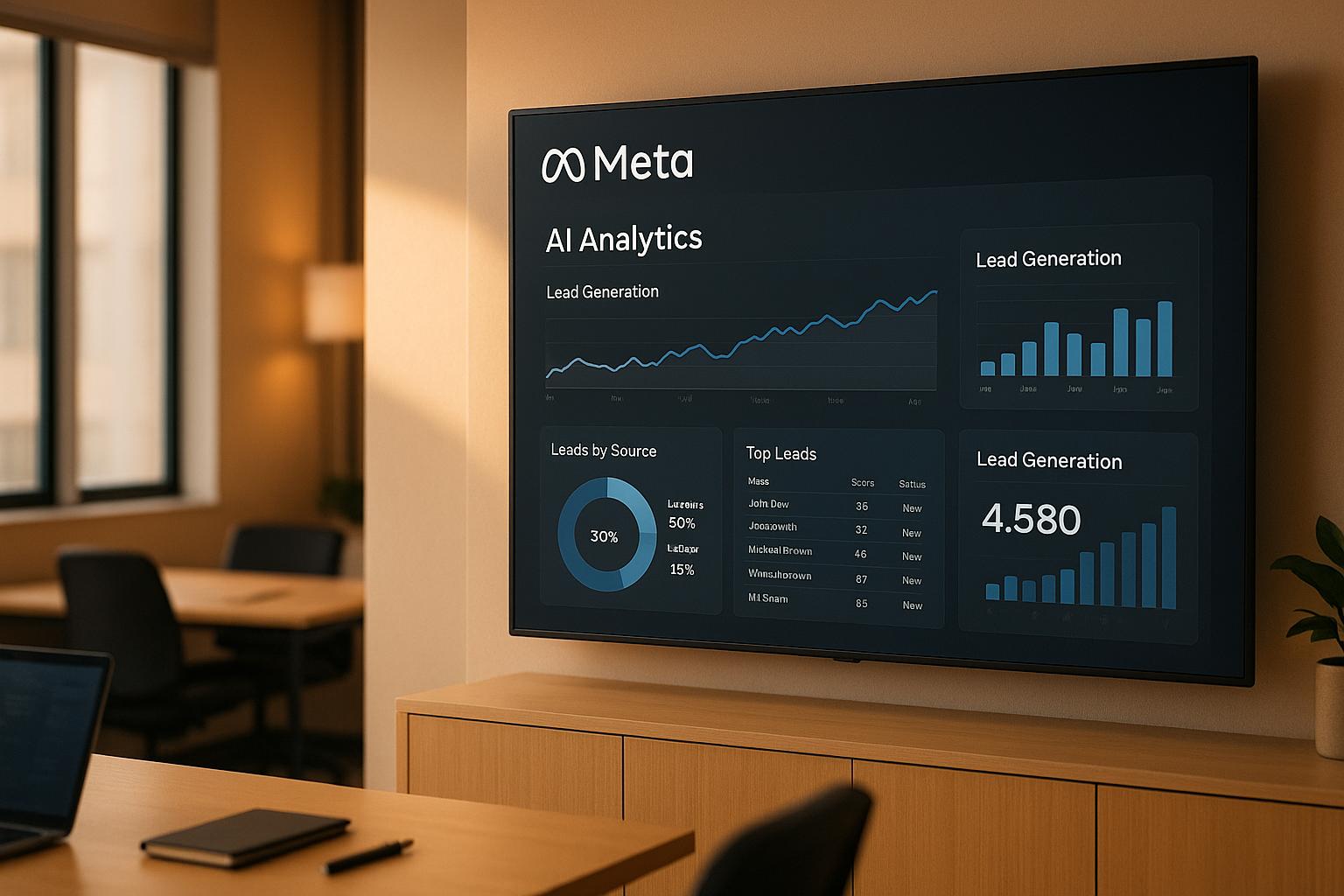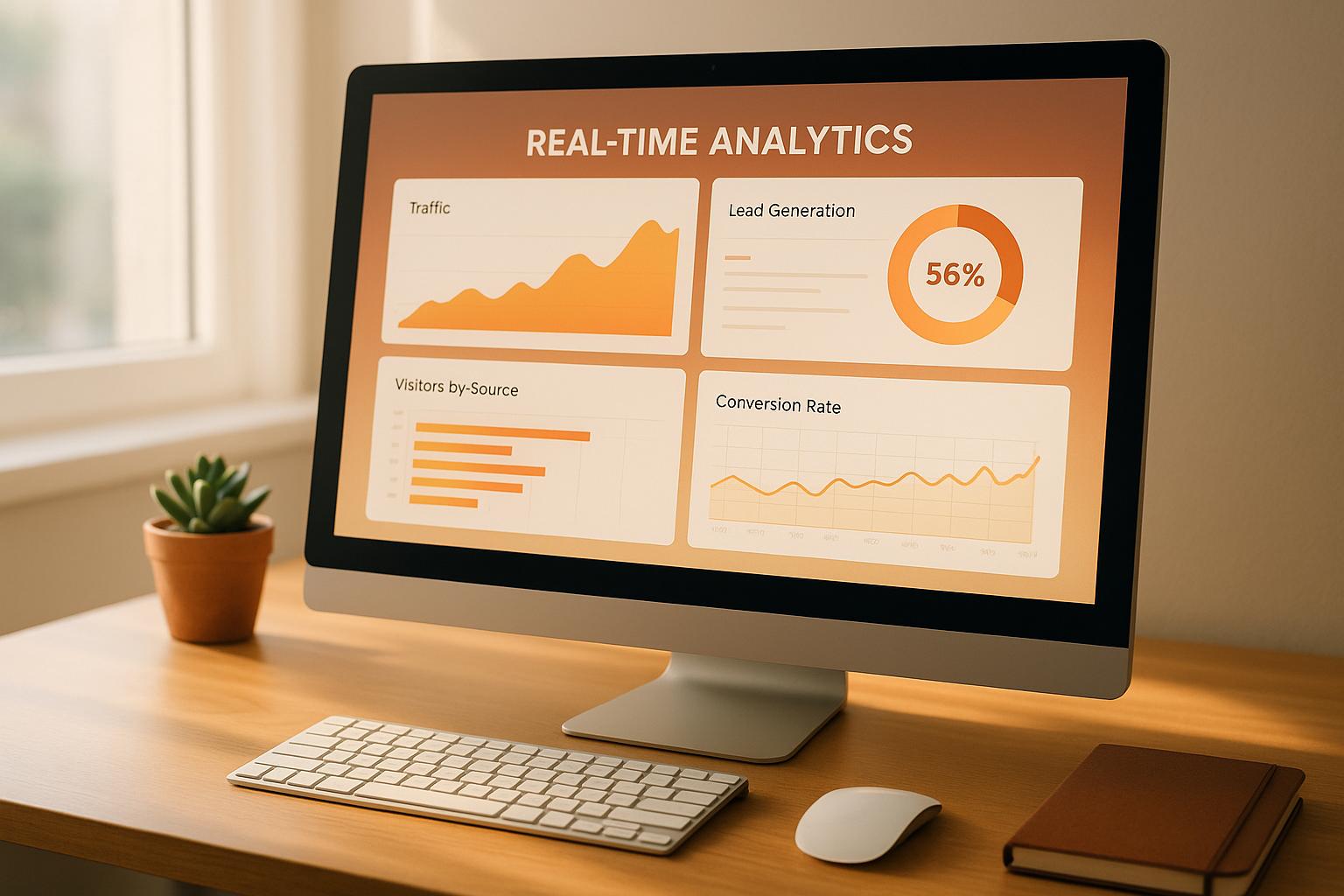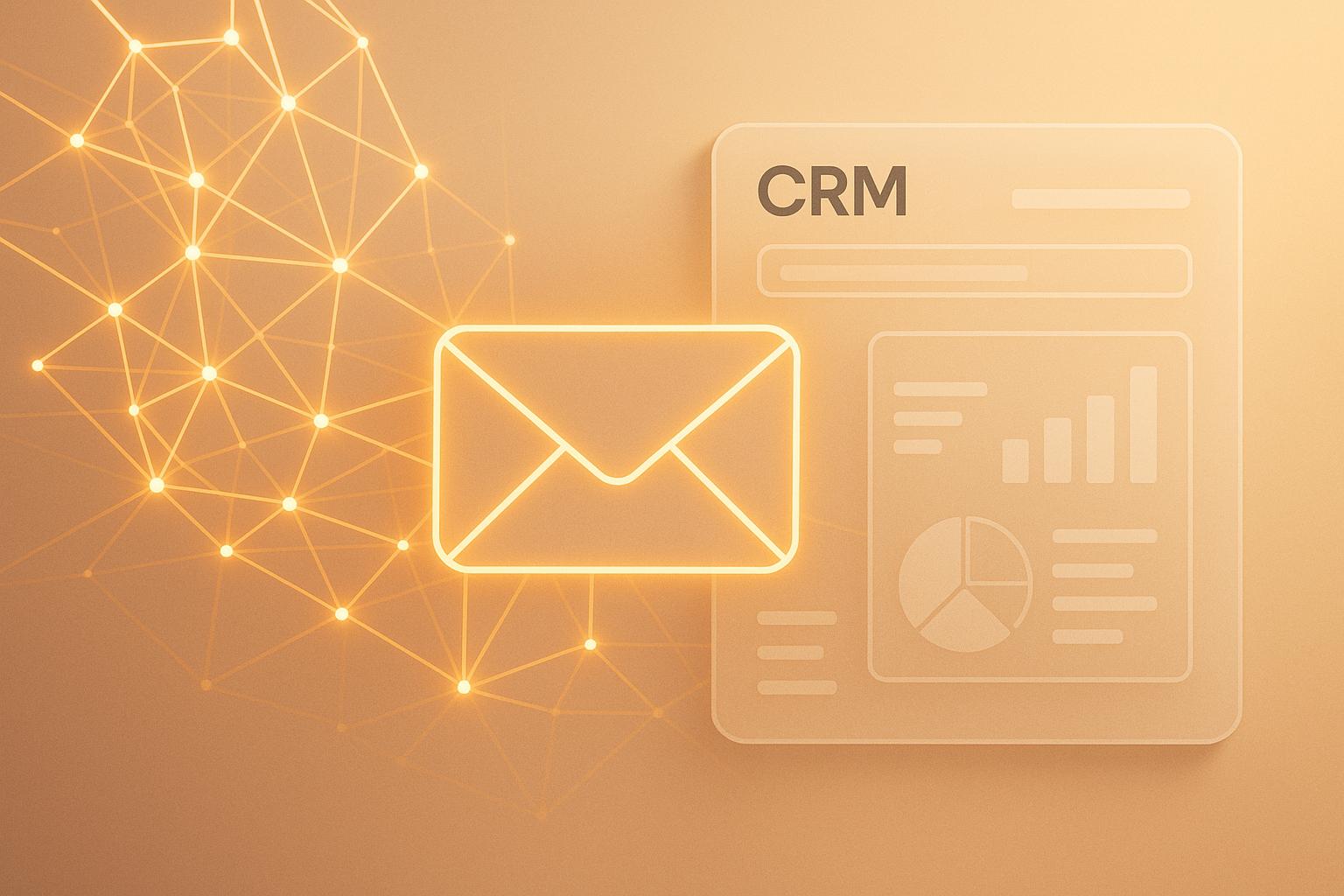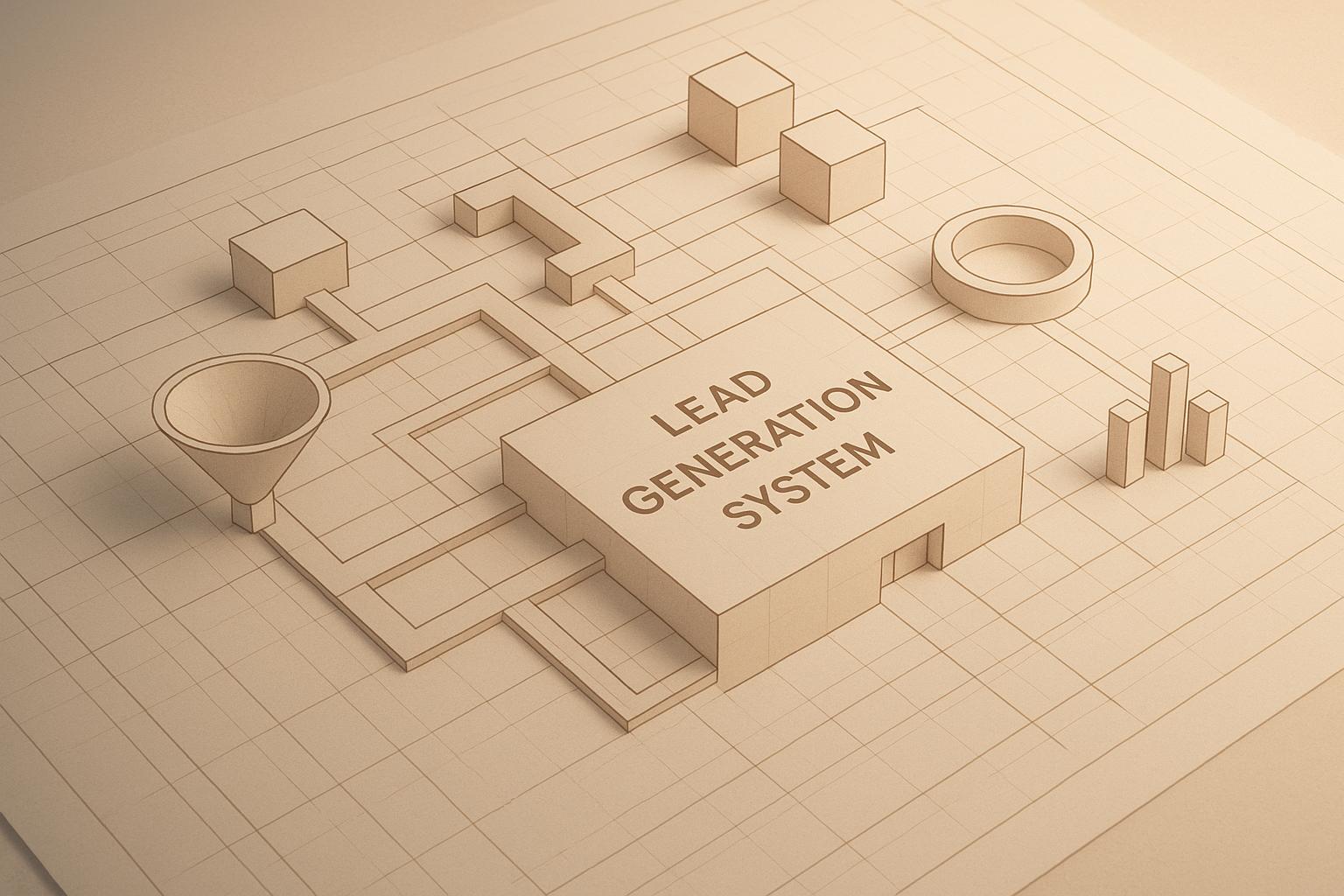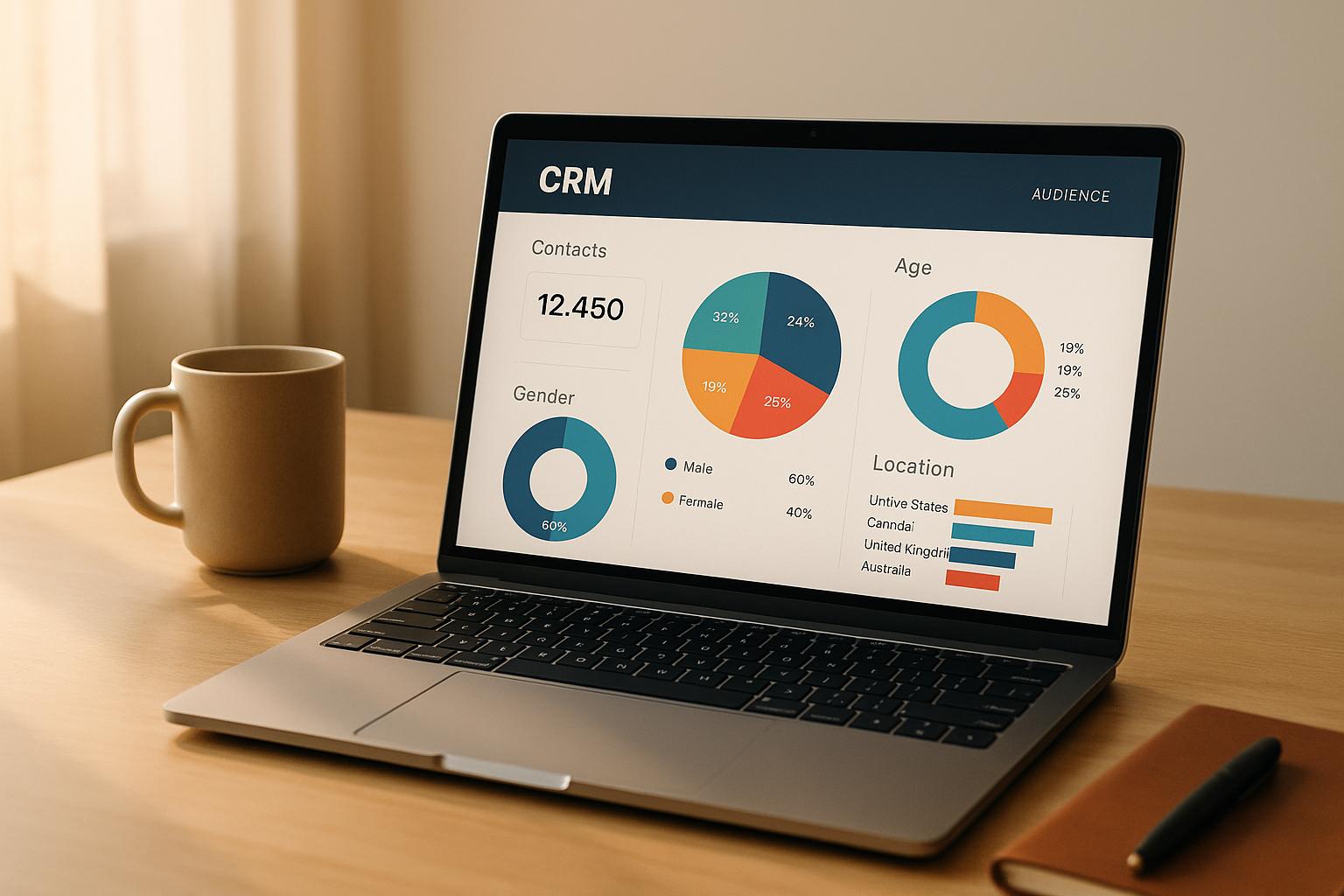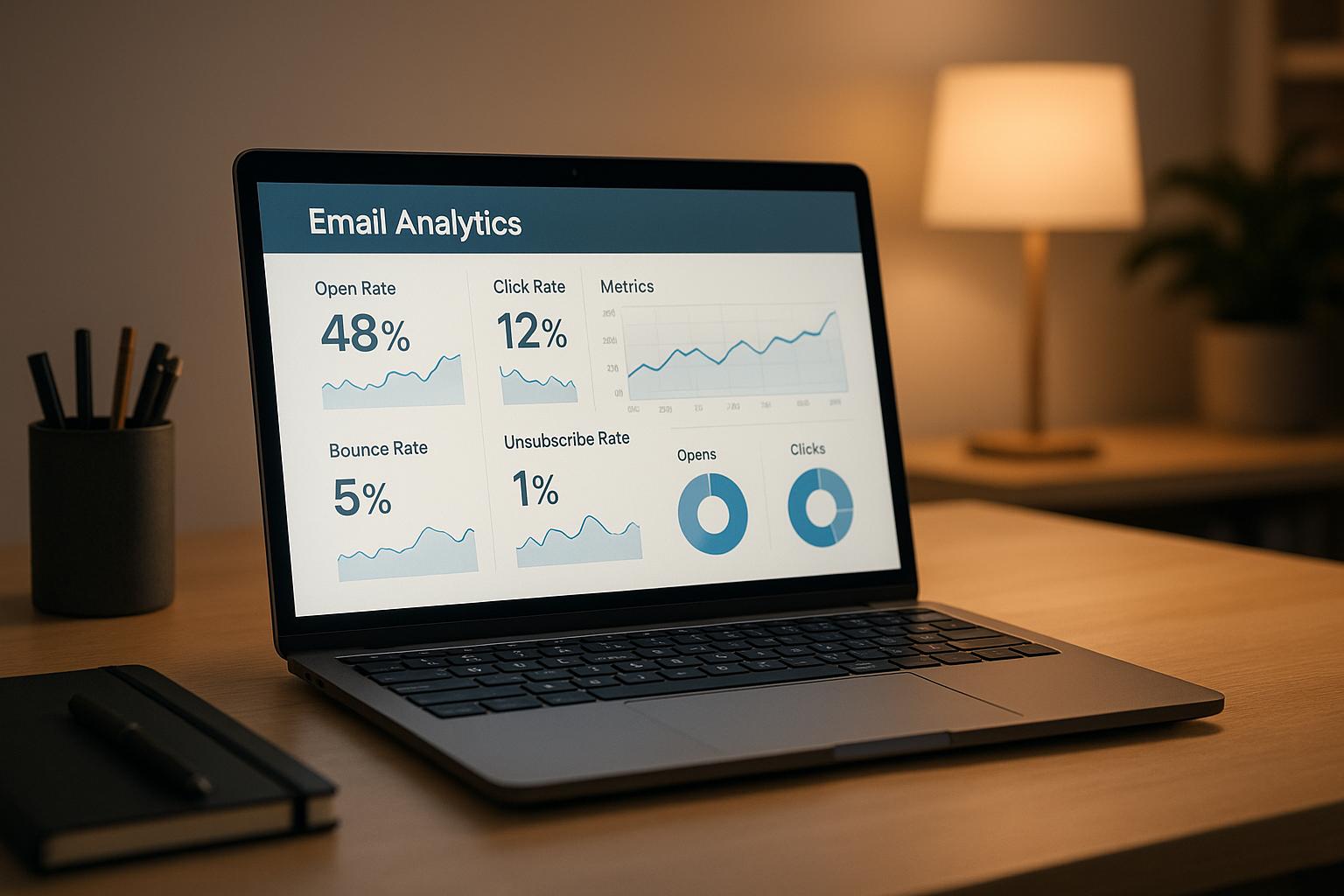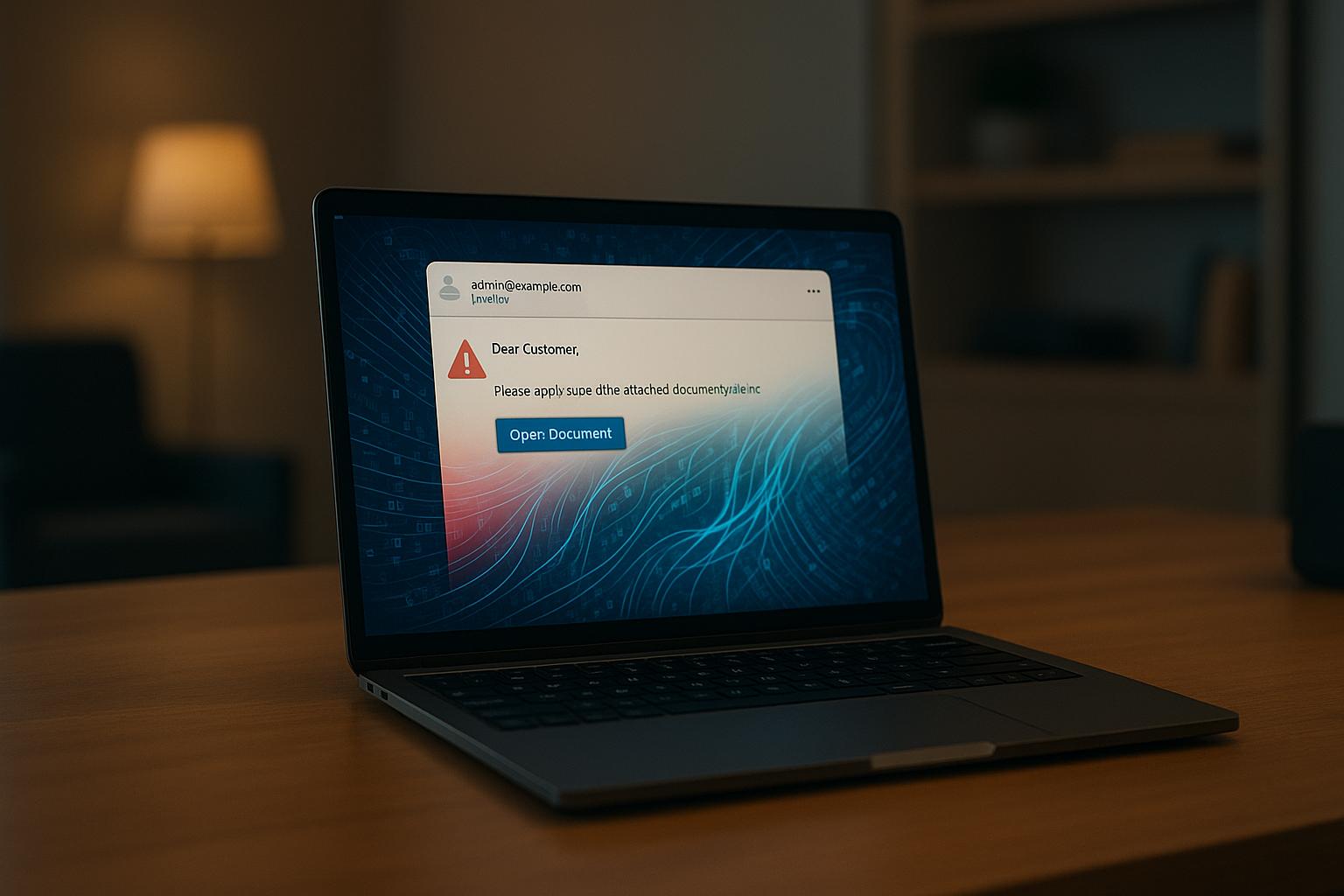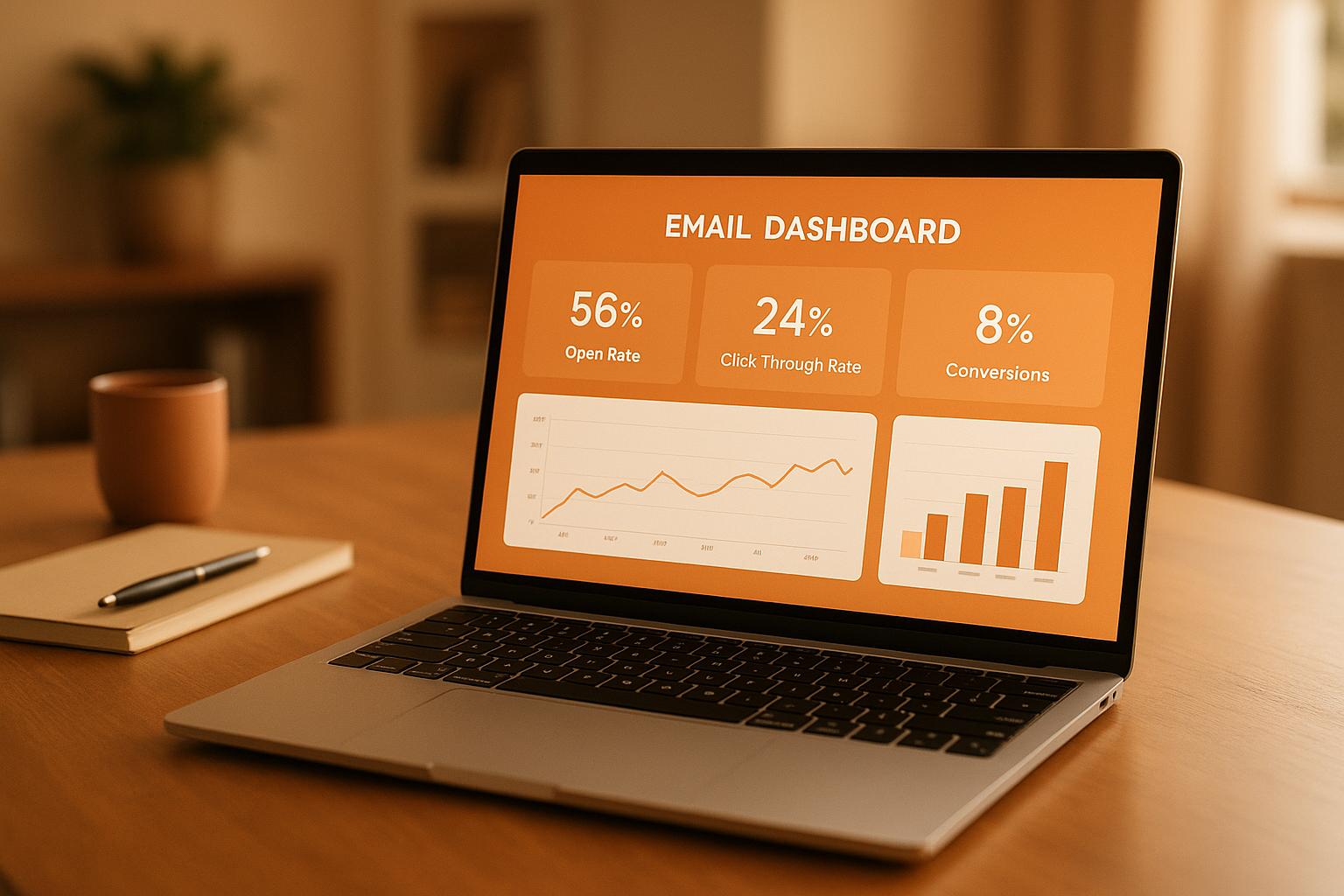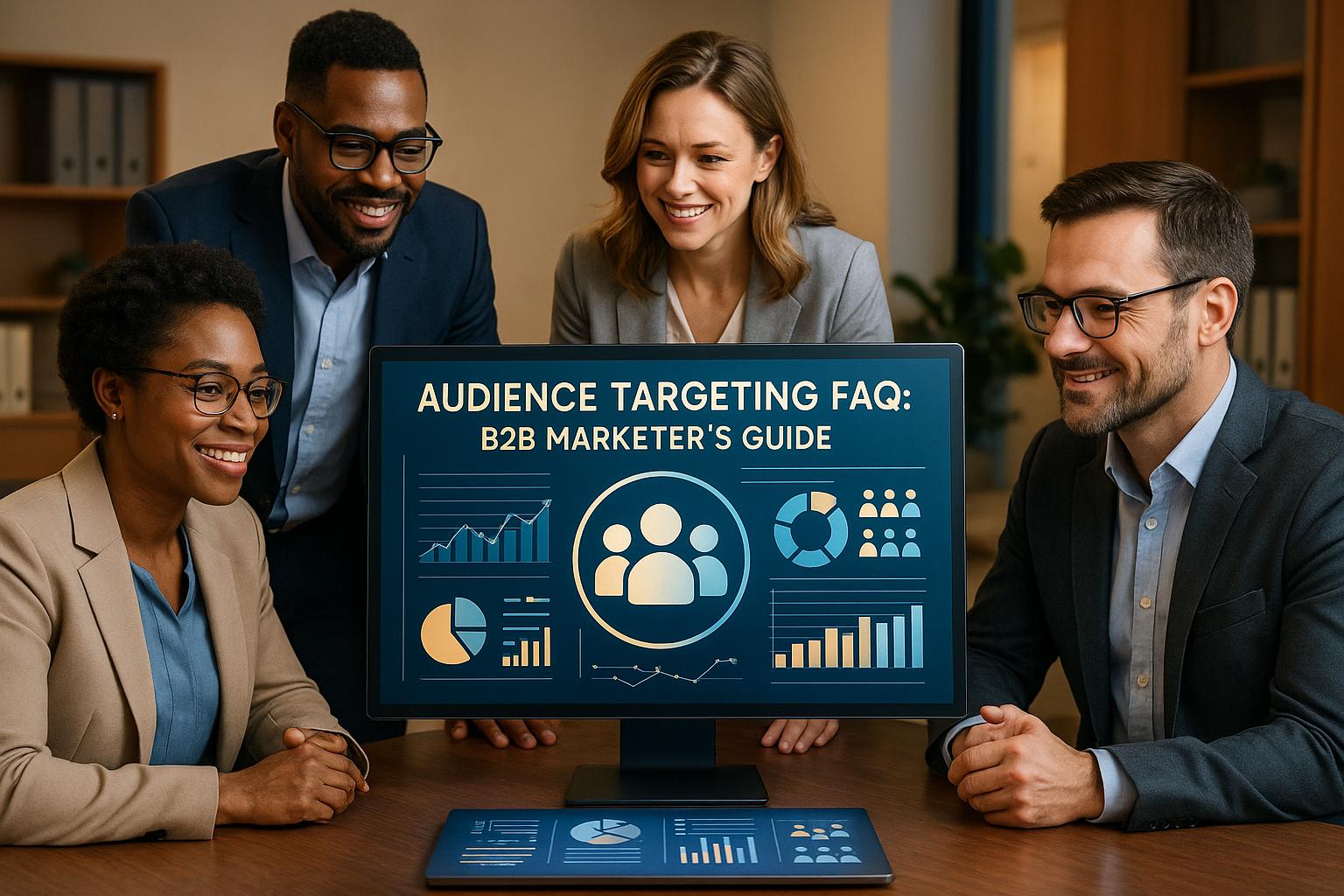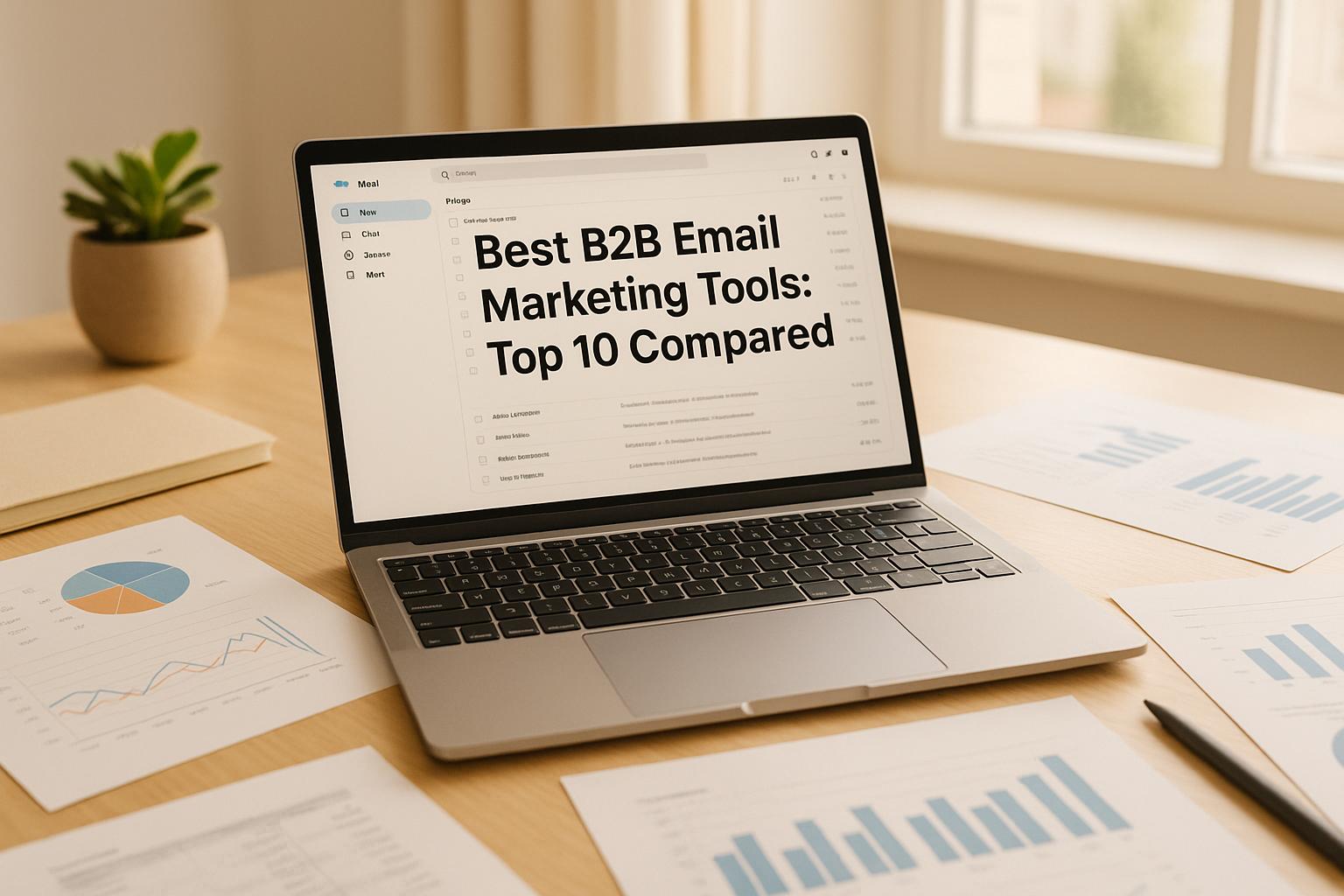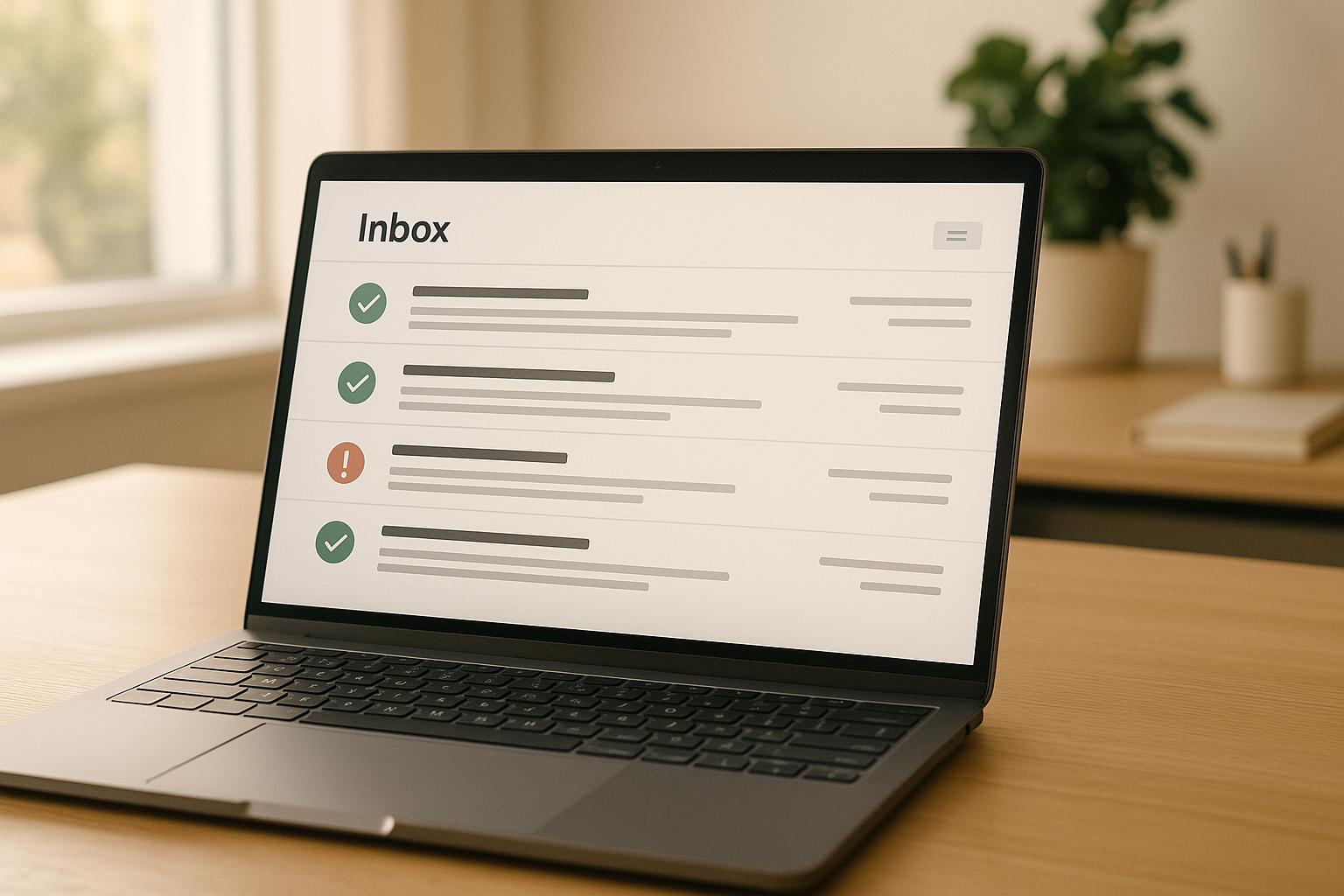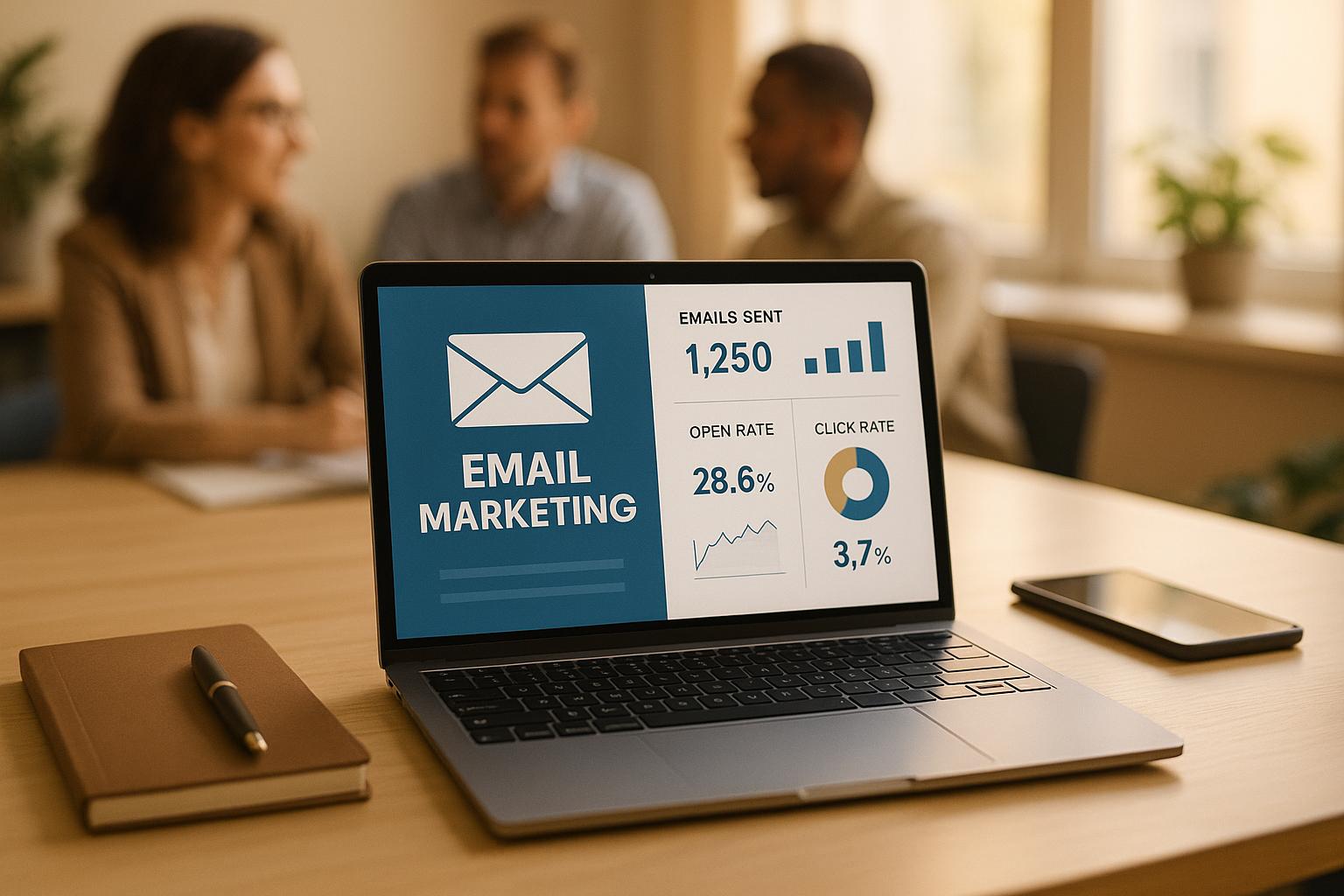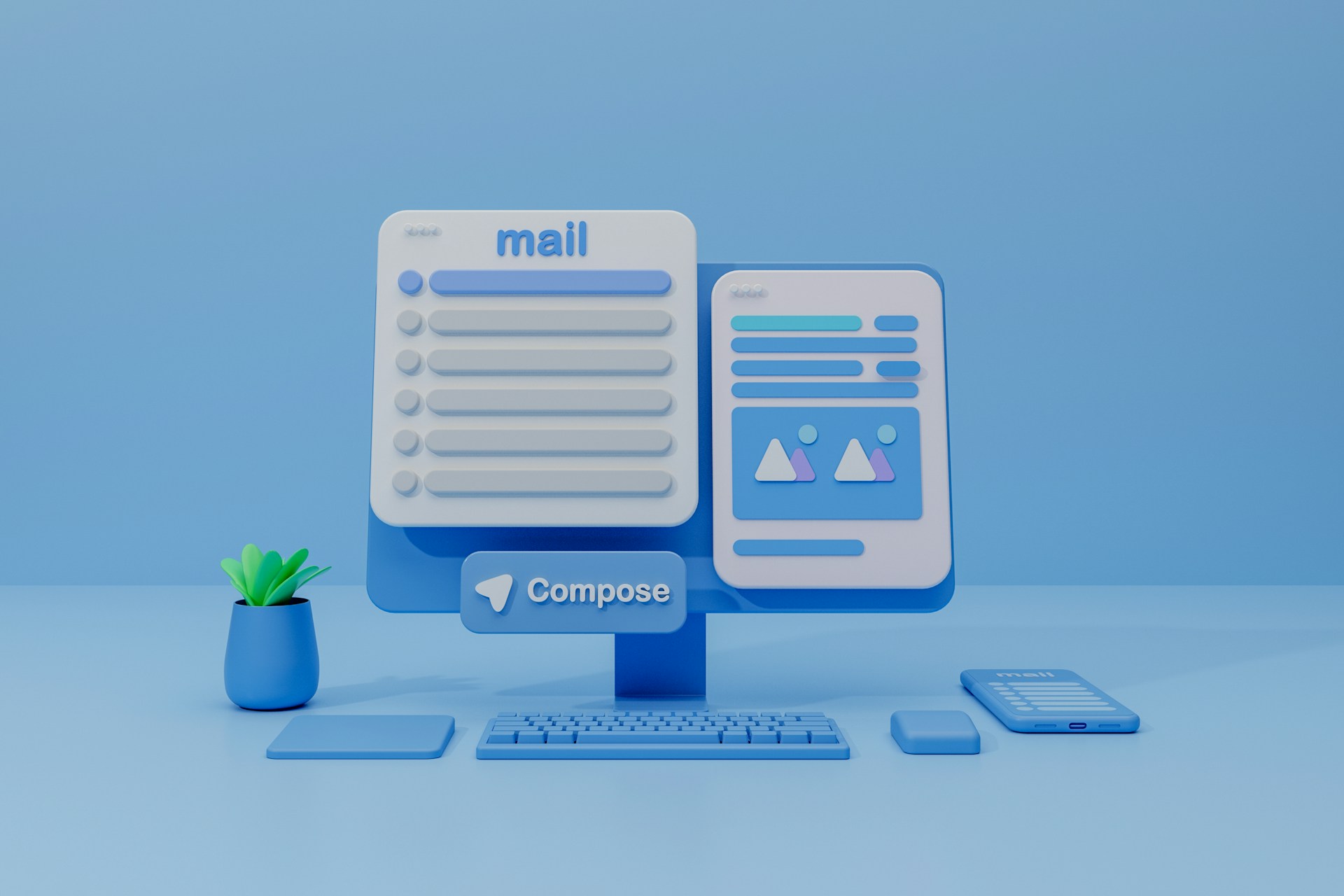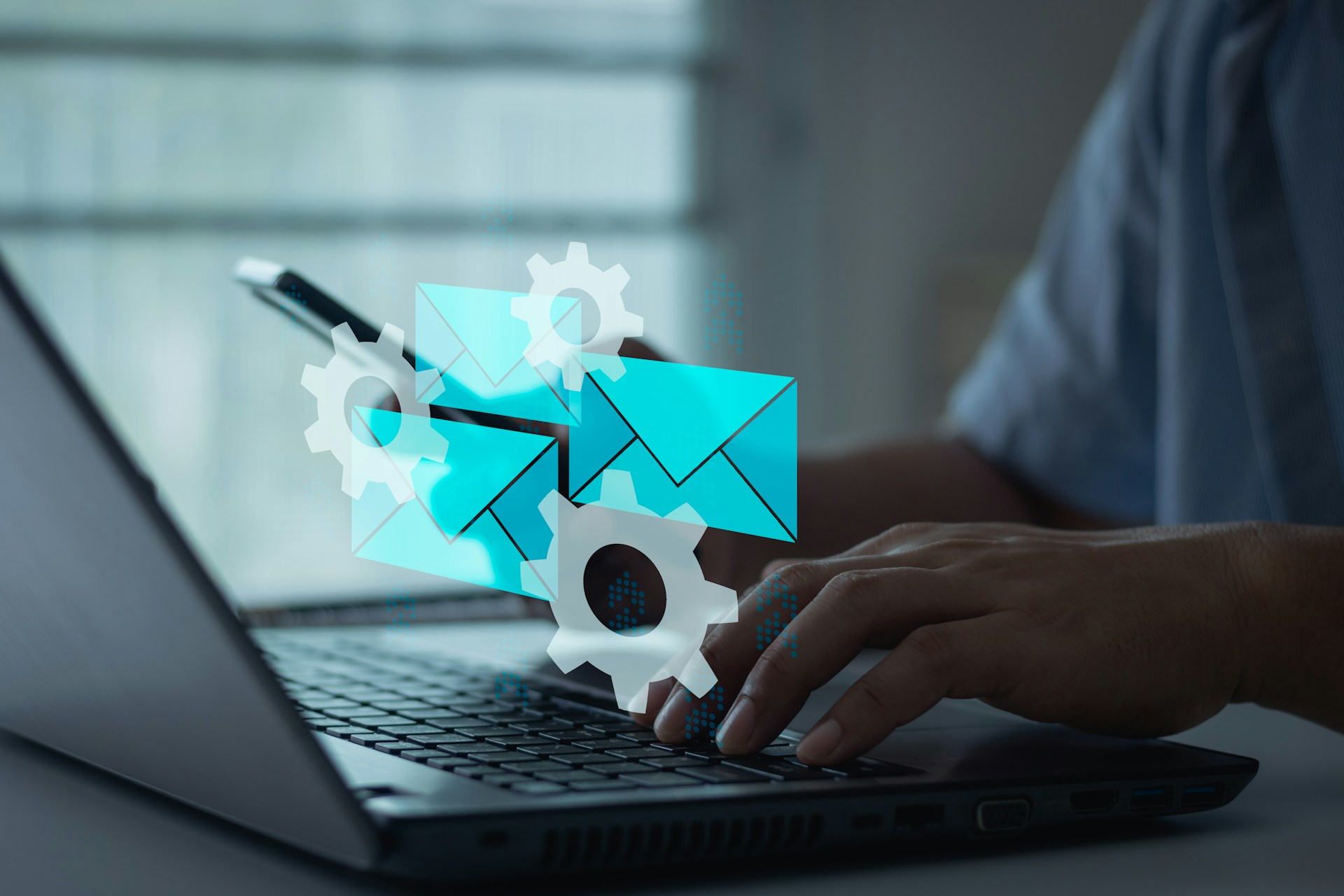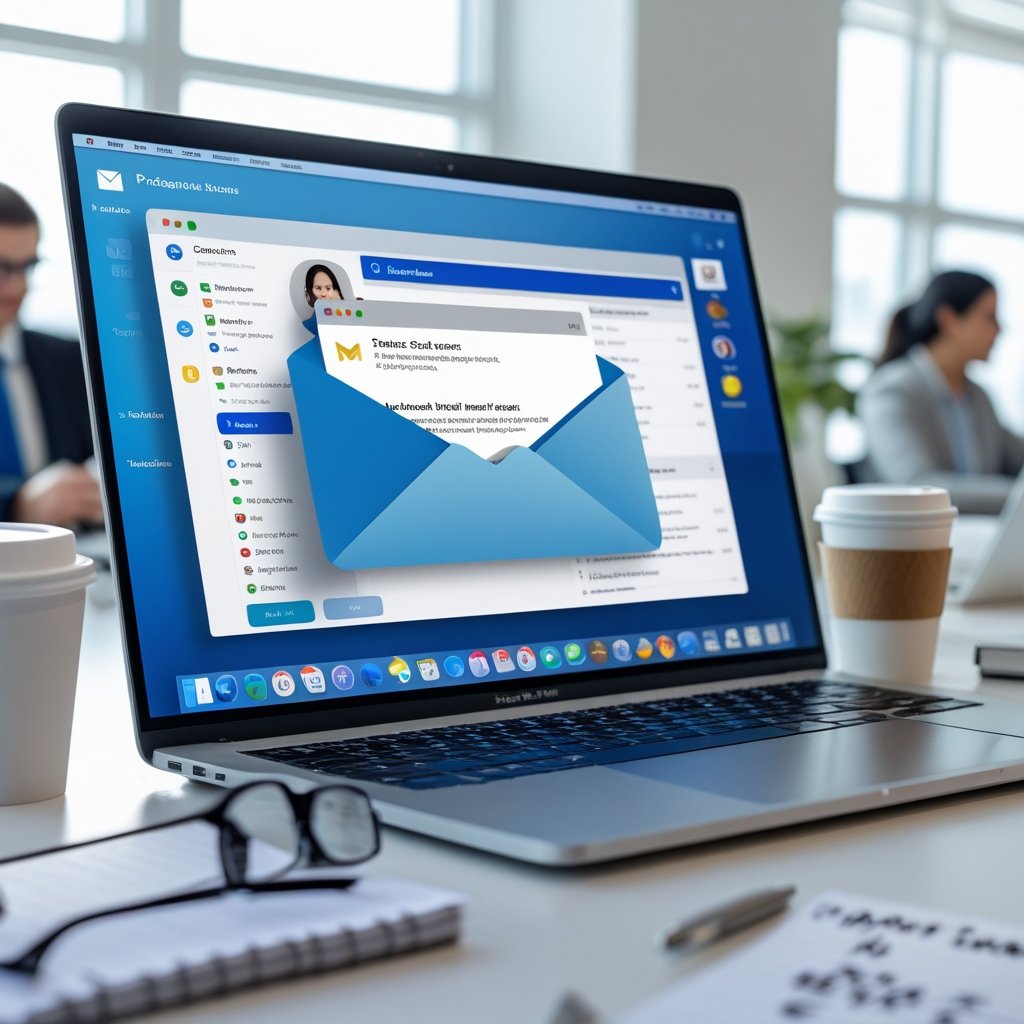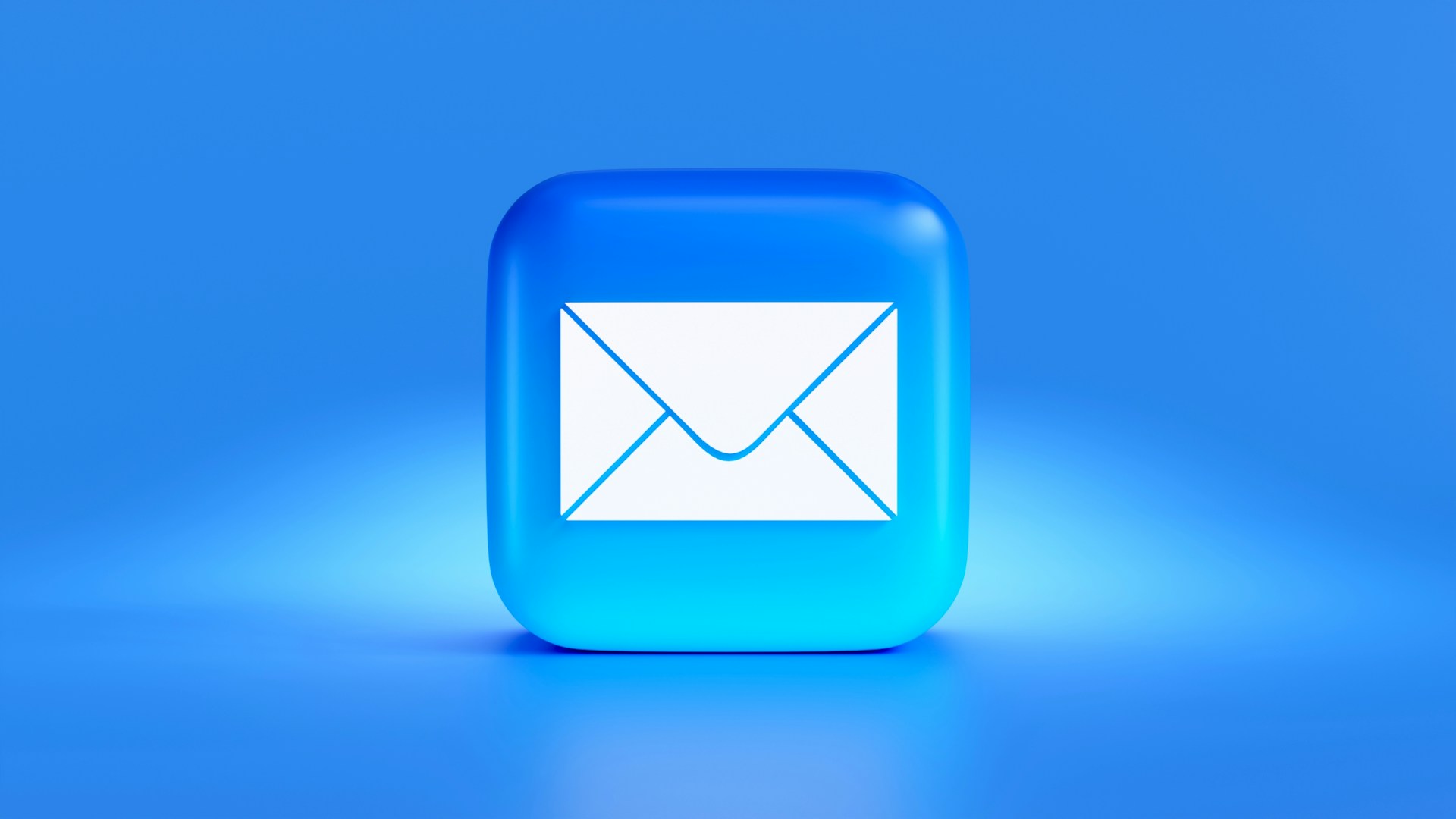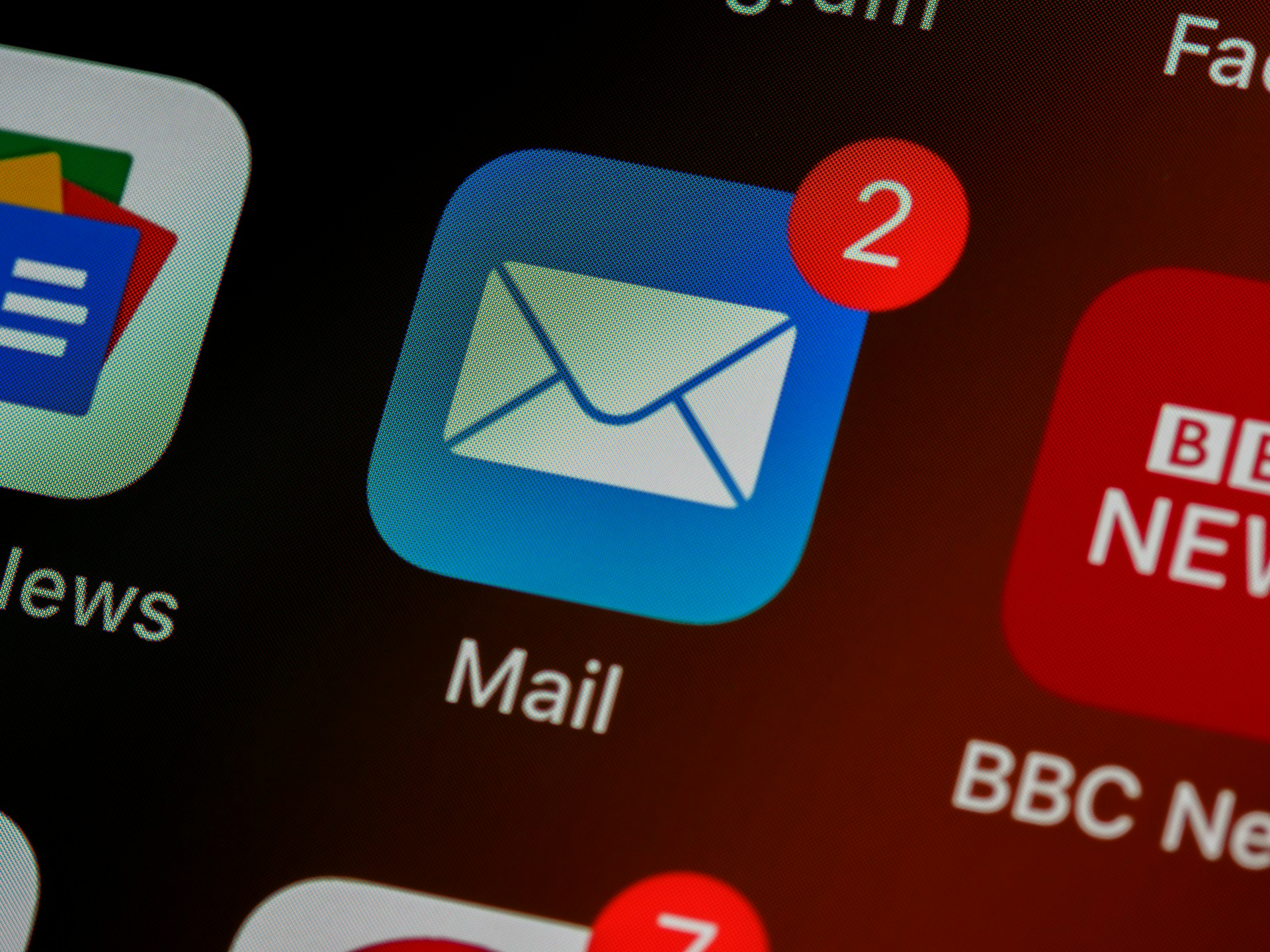Best Tools for Subscriber Segmentation Automation

Subscriber segmentation automation is a must for U.S. B2B marketers aiming to send the right message to the right audience. Tools in this space help group subscribers by behavior, demographics, or firmographics, delivering emails that outperform generic campaigns. For example, segmented email campaigns can generate up to 760% more revenue, increase open rates by 50%, and double click-through rates. Below are 10 tools that excel in segmentation, automation, and CRM integration, tailored to businesses of all sizes.
Key Tools:
- Breaker: Precision targeting with AI-powered lead enrichment. Starts at $200/month.
- Insider: Multi-channel campaigns with predictive analytics. Custom pricing.
- Klaviyo: Dynamic segmentation for email and SMS workflows. Starts at $20/month.
- Braze: Real-time segmentation with advanced automation. Custom pricing.
- Iterable: Event-based segmentation and AI-driven workflows. Custom pricing.
- HubSpot Marketing Hub: CRM integration and lifecycle-based segmentation. Starts at $50/month.
- Mailchimp: Affordable email marketing with predictive segmentation. Starts at $13/month.
- Customer.io: Real-time updates and multi-channel messaging. Starts at $100/month.
- ActiveCampaign: Lead scoring and 900+ automation templates. Starts at $39/month.
- Omnisend: Behavioral segmentation for omnichannel marketing. Starts at $16/month.
Quick Comparison:
| Tool | Best For | Starting Price | Key Features |
|---|---|---|---|
| Breaker | B2B lead generation, newsletters | $200/month | AI targeting, ICP matching |
| Insider | Enterprise multi-channel campaigns | Custom pricing | Predictive analytics, CRM integration |
| Klaviyo | E-commerce B2B | $20/month | Email/SMS workflows, predictive data |
| Braze | Mobile-first marketing | Custom pricing | Real-time segmentation, workflows |
| Iterable | Complex customer journeys | Custom pricing | Event-based workflows, AI tools |
| HubSpot | All-in-one marketing & CRM | $50/month | Lifecycle tracking, CRM sync |
| Mailchimp | Small B2B teams | $13/month | Predictive segmentation, easy setup |
| Customer.io | Data-driven messaging | $100/month | Real-time updates, webhooks |
| ActiveCampaign | Advanced automation | $39/month | 900+ templates, lead scoring |
| Omnisend | Omnichannel campaigns | $16/month | Behavioral segmentation, SMS/push |
These tools cater to various business needs, from startups to enterprises. Choose based on your budget, campaign complexity, and integration requirements.
How Does Email Segmentation Automate Your Workflows? - TheEmailToolbox.com
1. Breaker

Breaker is a newsletter platform tailored specifically for B2B marketers, with a strong focus on automated lead generation and precise audience targeting. Its tools are built to help businesses attract and nurture high-value leads through advanced automation and segmentation.
Advanced Segmentation Features
Breaker’s standout feature is its Precision Audience Targeting, which identifies what it calls "ICP-Perfect Leads" (Ideal Customer Profile). By allowing users to define their ICP with precision, the platform combines custom targeting, AI-powered enrichment, and proprietary data to connect businesses with the exact subscribers they’re looking for.
The segmentation engine processes and categorizes thousands of subscribers in real time. It uses firmographic data - like company size, industry, and job title - alongside behavioral triggers such as email engagement and website activity. Automated lead scoring further refines these segments, making it easy to create highly personalized, behavior-driven campaigns. This approach ensures that every lead is grouped and nurtured effectively.
Automation Capabilities
Breaker takes lead generation to the next level with its automation tools. Subscriber segments are continuously updated using real-time analytics, and new leads are automatically assigned to the most relevant groups based on predefined rules and observed behaviors.
Campaigns are triggered when subscribers meet specific criteria. For instance, a B2B SaaS company might set up automation to flag subscribers in the tech industry who have opened three or more emails in the past month. These individuals would then be moved into a "highly engaged tech leads" segment, primed for targeted campaigns.
The platform also ensures up to 99% deliverability by managing sender reputation, cleaning lists in real time, and complying with CAN-SPAM regulations.
Integration Options
Breaker integrates seamlessly with major CRM tools, making it a perfect addition to an existing marketing stack. It works with popular platforms like Salesforce, HubSpot, and Zapier, ensuring easy data synchronization and workflow automation. These integrations help marketers base their segmentation and campaigns on the most up-to-date customer information available.
U.S. Pricing and Scalability
Breaker offers transparent pricing plans designed for U.S.-based businesses.
- Starter Plan: $200 per month, including 100 new engaged subscribers and up to 50,000 email sends per month. This plan also comes with a 7-day trial.
- Custom Plan: Starting at $1,750 per month, it includes 1,000 new engaged subscribers and up to 250,000 email sends per month.
These plans ensure that businesses of all sizes can access the platform’s full range of features, which include precision audience targeting, unlimited email validations, a newsletter builder, signup forms, performance analytics, and white-glove support. The only differences between plans lie in their volume capacities.
Breaker’s scalability has delivered impressive results for many B2B organizations. For example, Jordan Ross, CEO of 8 Figure Agency, shared that his newsletter grew by 5,000 subscribers each month using Breaker. Similarly, Peter Lohmann, CEO of RL Property Management, highlighted the platform’s impact on his business:
"We tripled our sponsor revenue and doubled our community memberships with Breaker. Well over a 10X ROI."
With its advanced features and proven track record, Breaker is a powerful tool for B2B marketers looking to grow their subscriber base and drive meaningful results.
2. Insider

Insider is a marketing automation platform trusted by over 1,200 global brands and recognized for its advanced subscriber segmentation capabilities by both Gartner and Forrester. While it shares some similarities with Breaker in its use of advanced segmentation to deliver targeted campaigns, Insider’s multi-channel approach makes it stand out.
Advanced Segmentation Features
Insider uses AI-driven segmentation to help B2B marketers create highly targeted subscriber groups. By analyzing behavioral data, firmographics, engagement history, and predictive analytics, the platform enables marketers to divide audiences into precise segments. For example, you can group subscribers based on factors like company size, industry, job role, or website behavior - such as multiple visits to a pricing page - to create campaigns tailored to their interests.
The platform also leverages predictive analytics to identify high-value leads before they convert, allowing you to focus your marketing efforts on the most promising opportunities.
Automation Capabilities
Insider’s automation engine supports campaigns across multiple channels, including email, SMS, web push, and in-app messaging. With trigger-based workflows, the platform automatically responds to subscriber actions. You can set up complex sequences that adapt based on user behavior. For instance, if someone downloads a whitepaper, they can be automatically enrolled in a nurturing campaign that adjusts depending on their level of engagement.
One U.S.-based SaaS company used Insider to segment subscribers by industry and engagement level, automating personalized onboarding and upsell campaigns. The result? A 30% increase in qualified leads and a 20% improvement in email open rates.
Integration Options
Insider integrates seamlessly with popular U.S. CRM platforms like Salesforce, HubSpot, and Marketo through APIs and native connections. This ensures subscriber data stays up-to-date and allows for automated campaign triggers.
U.S. Pricing and Scalability
Insider offers custom pricing in U.S. dollars, with mid-sized B2B packages typically ranging from $1,200 to $2,000 per month. Its scalable architecture supports growing subscriber lists and evolving automation needs. Pricing depends on factors such as the number of contacts, email volume, and selected features.
The platform is highly rated, consistently earning an average score of 4.6/5 on G2. It also adheres to U.S. data privacy regulations like CAN-SPAM and CCPA, with features such as automated opt-out management and clear consent mechanisms to ensure compliance.
Next, we’ll take a closer look at another leading tool in subscriber segmentation automation.
3. Klaviyo
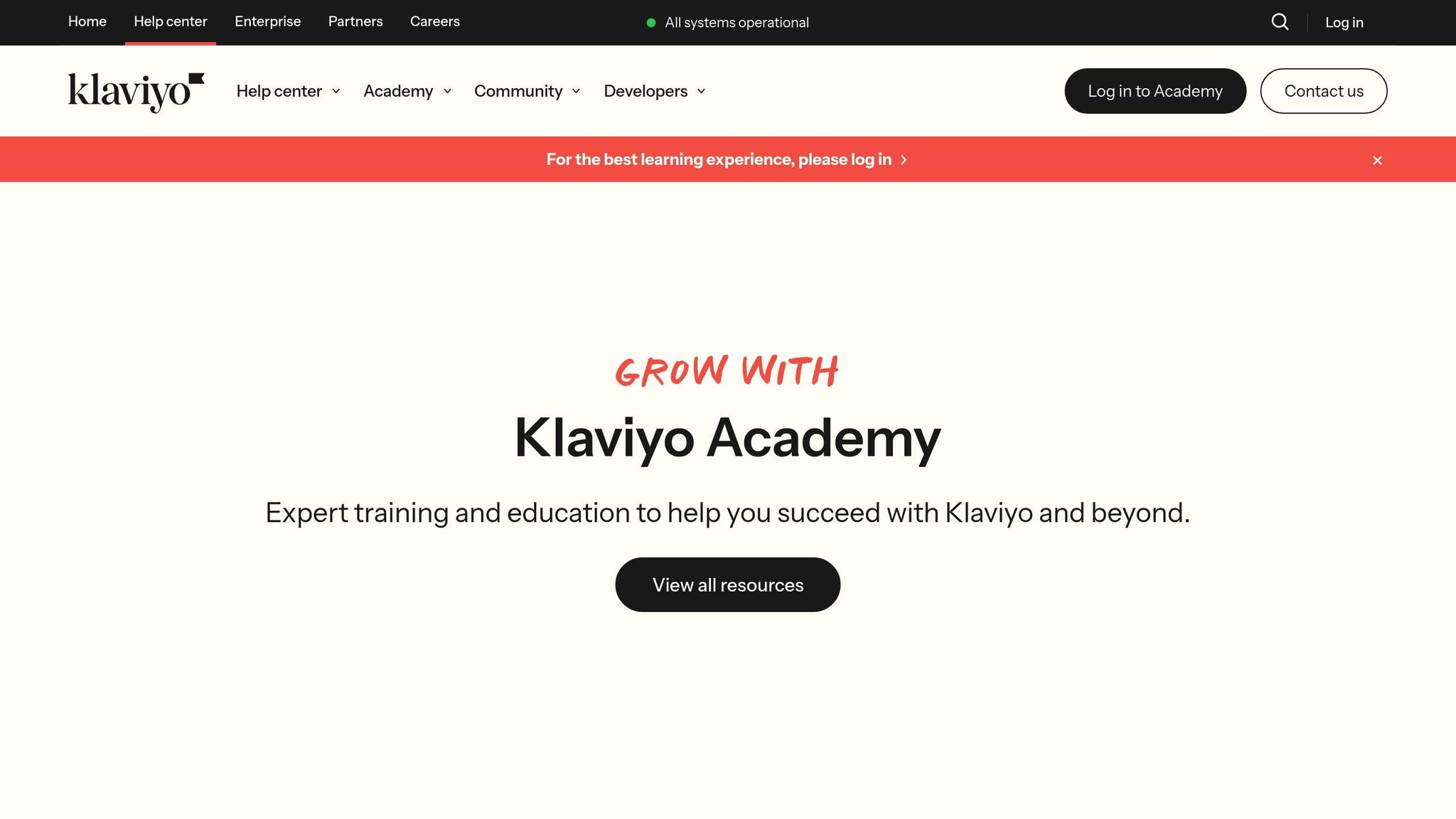
Klaviyo stands out as a powerful email and SMS automation platform, built with advanced segmentation capabilities that cater to B2B marketers. With over 100,000 businesses relying on it by 2025, Klaviyo helps companies create precisely targeted subscriber groups using behavioral data, engagement history, company attributes, and custom properties. It also offers real-time dynamic updates, keeping your segments fresh and relevant.
Advanced Segmentation Features
Klaviyo’s segmentation engine allows you to build dynamic groups that automatically update as subscriber behaviors change. Segments can be defined by specific actions like email opens, clicks, and site visits, as well as firmographic details such as company size and industry. On top of that, its AI-powered predictive analytics can estimate customer lifetime value, identify churn risks, and suggest the best times to send campaigns. This ensures your efforts are focused on the most promising leads.
Automation Capabilities
Klaviyo’s automation tools combine email and SMS into seamless workflows. For instance, you can set up automated follow-ups for webinar attendees who haven’t scheduled a demo yet. One consulting firm reported a 30% boost in qualified demo requests within three months of implementing these nurture sequences. On average, Klaviyo users see a 29% increase in revenue, largely driven by its robust automation features.
Integration Options
Klaviyo integrates smoothly with a variety of B2B tools, including major CRMs like Salesforce and HubSpot, as well as eCommerce platforms like Shopify and WooCommerce. These integrations ensure that lead statuses and company data are always up to date, eliminating the need for manual input. This streamlined approach makes data management easier and supports scalable pricing plans.
U.S. Pricing and Scalability
Klaviyo offers transparent pricing. A free plan includes 250 contacts and 500 sends, while paid plans start at $20 per month for 500 contacts, with SMS available as an optional add-on. Pricing scales with your contact list, and custom enterprise packages are available for larger businesses.
While Klaviyo receives high marks for its intuitive segmentation tools and advanced automation workflows, B2B users may need to dedicate time to tailoring integrations and workflows to fit longer sales cycles and account-based marketing needs.
4. Braze

Braze is a customer engagement platform tailored for enterprise-level B2B marketers, offering powerful real-time segmentation and automation tools. With a 4.5/5 rating on G2 for its advanced features, Braze handles millions of user events, making it a go-to solution for businesses looking to refine their audience targeting. Here's a closer look at what makes Braze stand out: its segmentation capabilities, automation tools, and seamless integrations.
Advanced Segmentation Features
Braze’s segmentation engine uses real-time behavioral data to create dynamic audience groups that adjust automatically based on user interactions. This means you can segment audiences by factors like company size, industry, engagement frequency, or even custom events specific to your sales funnel. The platform excels in handling complex segmentation logic, allowing you to target users based on milestones and trigger personalized nurture campaigns. According to Braze’s internal data, companies using these tools have seen a 25% boost in email open rates and a 20% rise in click-through rates for their B2B campaigns.
Automation Capabilities
Braze’s visual automation builder lets you create sophisticated multi-channel workflows that go far beyond simple email sequences. It supports event-triggered workflows with conditional logic, time delays, and adaptable customer journeys based on user behavior. For example, one B2B fintech firm reported a 30% increase in qualified leads while cutting down on manual campaign management time. These automation tools cover email, SMS, and push notifications, ensuring consistent messaging across multiple channels.
Integration Options
Braze integrates effortlessly with key B2B tools like Salesforce, Segment, Snowflake, and other data warehouses. These integrations keep your data synced in real-time, so your segmentation criteria stay up-to-date with the latest subscriber activity and lead statuses. For businesses with unique needs, Braze also offers API access for custom integrations, making it a versatile choice for even the most complex tech ecosystems.
U.S. Pricing and Scalability
Braze’s pricing is customized based on active users and messaging volume, with enterprise plans typically starting at around $1,500 per month for mid-sized B2B companies. While the cost is higher than basic email marketing tools, it includes advanced segmentation, automation, integrations, and analytics. The platform is designed to scale with your business, handling large subscriber databases and high messaging volumes without sacrificing performance. However, smaller companies might find the investment and complexity harder to justify.
Braze is a strong choice for B2B organizations that need advanced automation and segmentation to elevate their marketing efforts, though its cost and features may be better suited for larger enterprises.
5. Iterable
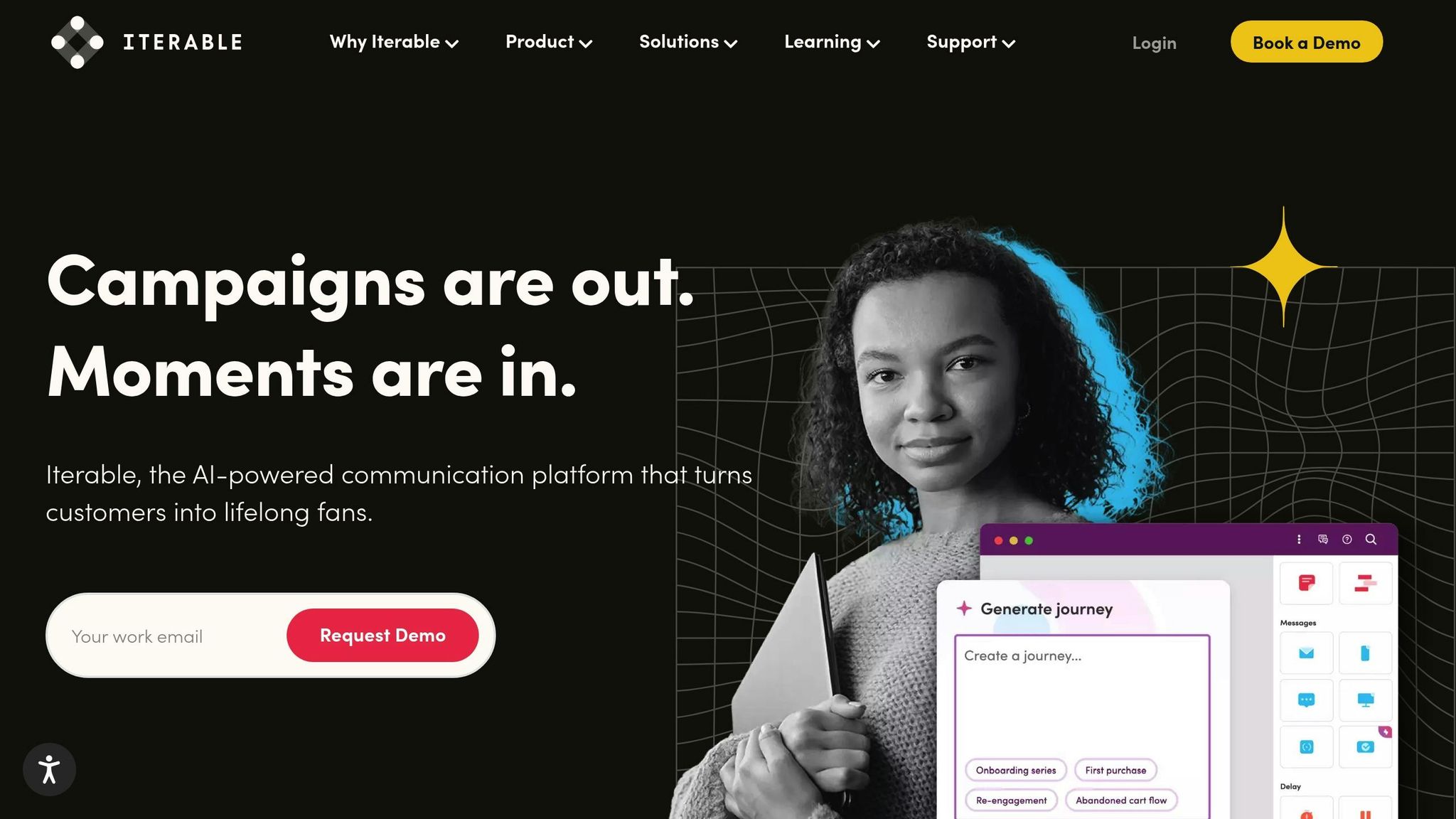
Iterable stands out as a cross-channel marketing automation platform, well-regarded for its ability to deliver real-time subscriber segmentation. With tools like Brand Affinity™ and Send Time Optimization, this platform leverages AI to enhance campaign performance. It supports various communication channels, including email, SMS, push notifications, and in-app messaging, making it a versatile choice for managing complex B2B campaigns.
Advanced Segmentation Features
Iterable excels in segmentation, thanks to its real-time behavioral tracking and dynamic audience updates. You can create segments based on subscriber actions - like email opens, website visits, or product usage - combined with firmographic data such as company size and industry. Its advanced filters allow you to set detailed rules that update automatically as subscriber behavior changes. According to Iterable's case studies, businesses using these workflows have reported a 20–40% boost in email engagement rates.
Automation Capabilities
The platform's workflow builder enables you to design multi-channel automation with features like branching logic, time delays, and conditional messaging. For example, one technology firm used Iterable to automate lead nurturing workflows triggered by behavioral signals, achieving a 30% increase in qualified leads. Additionally, its AI-powered Send Time Optimization ensures messages are sent when recipients are most likely to engage, maximizing the impact of your campaigns.
Integration Options
Iterable offers robust integration capabilities, working seamlessly with major CRM platforms like Salesforce and HubSpot, as well as data warehouses and analytics tools. These native integrations ensure real-time data synchronization, keeping your segmentation rules up-to-date. For businesses with more complex needs, Iterable's API supports custom integrations, allowing you to connect data from across your marketing and sales systems to trigger automated workflows effortlessly.
U.S. Pricing and Scalability
Iterable's pricing is tailored to your subscriber count and feature needs, with costs typically starting between $500 and $1,500 per month for mid-market B2B businesses. The platform is built to scale, capable of handling large contact databases and high-volume campaigns without a hitch. Annual contracts are available for larger organizations, and Iterable provides U.S.-based customer support and onboarding services to help B2B marketers hit the ground running. The platform also meets SOC 2 Type II certification standards, ensuring compliance for businesses managing sensitive data. Though its pricing is on the higher side compared to basic email tools, the advanced segmentation, AI-driven features, and multi-channel automation make it a strong choice for data-focused marketing teams.
Next, we’ll dive into HubSpot Marketing Hub and its powerful tools for segmentation automation.
6. HubSpot Marketing Hub
HubSpot Marketing Hub is a comprehensive platform combining marketing automation and CRM tools, boasting a 4.3/5 rating in recent B2B email marketing reviews. Its strength lies in unifying marketing and sales processes, making it an excellent choice for B2B teams aiming to optimize customer acquisition and retention.
Advanced Segmentation Features
HubSpot simplifies audience segmentation with dynamic lists and customizable properties that automatically update. Marketers can organize contacts using firmographics and behavioral data. The platform also tracks lifecycle stages, categorizing contacts as leads, marketing qualified leads, sales qualified leads, or customers. This ensures your messaging aligns perfectly with each stage of the buyer's journey.
Additionally, HubSpot supports behavior-based segmentation, enabling you to create highly targeted groups based on specific actions, such as signing up for a demo or attending a webinar. These advanced features make automation seamless and effective.
Automation Capabilities
HubSpot’s workflow automation tools use conditional logic to manage contact movement between segments and trigger follow-up actions automatically. You can design automated sequences to assign contacts to specific groups, update their properties in real time, and launch personalized email campaigns based on their interactions. Multi-step workflows can also include tasks like assigning leads to sales reps, sending internal notifications, and updating lead scores. The visual workflow builder is user-friendly while offering the flexibility needed for complex B2B sales cycles.
Integration Options
With over 1,000 third-party app integrations, HubSpot connects seamlessly with tools like Salesforce, webinar platforms, and event management software. This ensures your segmentation data stays consistent across marketing, sales, and customer service systems. The platform also provides an API for custom integrations, allowing connections to proprietary or niche B2B tools. Real-time data synchronization ensures that any prospect activity - whether attending a webinar, downloading a resource, or engaging in a sales call - automatically updates their contact record and segmentation.
U.S. Pricing and Scalability
HubSpot offers a free tier with basic segmentation features, making it accessible for smaller B2B teams. Paid plans start at around $20 per month for the Starter plan, with Professional and Enterprise tiers costing several hundred dollars monthly, depending on contact volume and feature needs. All pricing is in U.S. dollars. The platform handles everything from small contact lists to large-scale databases without performance hiccups. Higher-tier plans unlock advanced tools like detailed reporting dashboards and custom workflows, catering to more complex business requirements.
sbb-itb-8889418
7. Mailchimp
Mailchimp stands out as an easy-to-use email marketing platform tailored for B2B marketers. With a 98% delivery rate and over 300 integrations, it provides a reliable and flexible solution for managing email campaigns.
Advanced Segmentation Features
Mailchimp offers a variety of segmentation tools to help marketers target their audience effectively. You can segment contacts based on demographics, behavioral triggers (like email opens, clicks, or website activity), and custom fields. For example, you can organize contacts by company size, industry, or job title. Its AI-powered predictive segmentation goes a step further by identifying subscribers who are most likely to engage or convert.
Automation Capabilities
Automation is where Mailchimp truly shines. The platform allows you to create workflows for tasks like welcome emails, lead nurturing, re-engagement campaigns, and transactional messages. These workflows can be triggered by specific subscriber actions, such as signing up for a list, clicking on a link, or hitting a particular engagement milestone. For instance, a B2B SaaS company might segment its audience by industry and engagement level - leads from the tech sector who attend a webinar could automatically move to a "high intent" segment and receive a personalized follow-up email. The visual automation builder simplifies combining segmentation rules and triggers for precise, timely communication.
Integration Options
Mailchimp integrates effortlessly with leading CRMs like Salesforce and HubSpot, as well as with e-commerce platforms, webinar tools, and analytics software. For businesses with unique needs, its API allows for custom integrations, ensuring subscriber data stays up to date.
U.S. Pricing and Scalability
Mailchimp offers a clear, tiered pricing structure in U.S. dollars. It starts with a free plan that includes basic segmentation tools, while the Essentials plan begins at $13 per month for up to 500 contacts. As your business grows, the Standard and Premium plans provide access to advanced features like AI-driven content creation, predictive insights, and complex automation workflows. For example, a consulting firm in the U.S. used Mailchimp to segment its audience based on service interest and automate follow-up emails, leading to a 30% increase in qualified leads within just three months.
8. Customer.io
Customer.io delivers advanced tools for segmentation and automation, making it a go-to platform for large-scale B2B marketing campaigns. In 2024, it handled over 5 billion API calls daily and sent more than 56 billion messages, showcasing its reliability and performance for demanding marketers.
Advanced Segmentation Features
One of Customer.io's standout features is its ability to create dynamic audience segments that adjust in real time. By combining data like demographics, engagement history, and custom events, you can craft highly specific user groups. These segments automatically update as users interact with emails, visit websites, or engage with your product. This real-time adaptability lays the groundwork for its powerful automation tools.
Automation Capabilities
The platform's automation engine is designed for complex, multi-step campaigns triggered by user actions, time delays, or data changes. It supports messaging across multiple channels, including email, SMS, push notifications, and webhooks. In 2024 alone, Customer.io processed 17 million monthly messages and sent 7.3 billion webhooks, emphasizing its ability to manage real-time, multi-channel communication at scale.
Integration Options
Customer.io complements its segmentation and automation features with a strong API infrastructure and webhook functionality. These tools allow seamless integration with a variety of systems, such as CRMs, analytics platforms, and custom applications. This ensures smooth data flow across your tech stack, enhancing the precision and effectiveness of your campaigns.
U.S. Pricing and Scalability
Customer.io is built to grow alongside businesses, whether you're a small startup or an enterprise managing millions of users. With a 99.98% uptime rate, the platform offers reliable performance. You can test its capabilities with a 14-day free trial - no credit card required - making it easy to explore its potential before committing. Designed to reduce operational burdens while improving ROI, it’s a practical choice for organizations at any stage of growth.
"There's nothing this platform can't accomplish for you. Customer.io has been the perfect messaging platform for our team every step of the way. We loved it as a small team, and it's stayed perfect for us along our path of continuous growth." – Diego Schocher, Business Architect, AMI
9. ActiveCampaign
ActiveCampaign is a marketing automation platform that blends powerful segmentation tools with CRM capabilities, earning a solid 4.4/5 rating.
Advanced Segmentation Features
ActiveCampaign enables businesses to segment their contacts using behavioral triggers, lead scoring, and event tracking. It monitors actions like website visits, email interactions, and link clicks. On top of that, its AI-powered predictive analytics can anticipate future behaviors, paving the way for dynamic and highly personalized campaigns.
Automation Capabilities
With over 900 pre-built templates, ActiveCampaign's automation builder is designed to handle even the most complex workflows. Whether you're managing long sales cycles or intricate marketing funnels, this tool has you covered. Its built-in CRM ensures smooth collaboration between sales and marketing teams, making it easy to transition from automated campaigns to tailored, one-on-one outreach. Plus, it integrates effortlessly with your existing tools.
Integration Options
ActiveCampaign offers seamless integration with leading CRMs like Salesforce and HubSpot, as well as eCommerce platforms and productivity tools. Whether you prefer native connections, Zapier, or API access, the platform provides the flexibility needed for cross-platform automation.
U.S. Pricing and Scalability
In the U.S., ActiveCampaign’s pricing starts at $39 per month, with costs increasing based on the size of your contact list. Its advanced automation features and reliable email deliverability make it a smart choice for businesses managing complex B2B workflows.
10. Omnisend
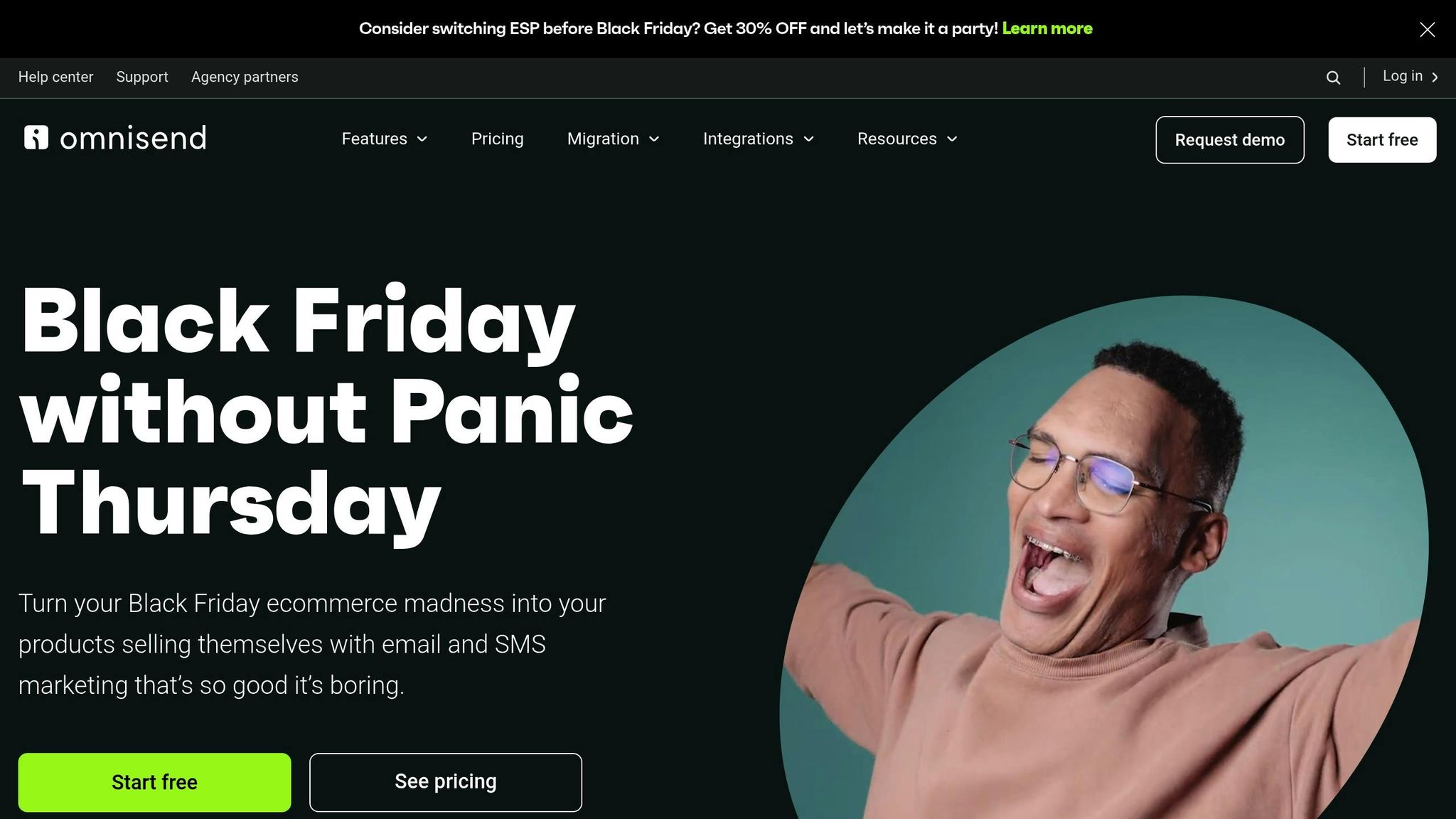
Closing out our list is Omnisend, a multi-channel automation platform designed to help B2B marketers connect with their audience through email, SMS, and push notifications. With a solid 4.7/5 rating on G2 from over 700 reviews, it stands out for its user-friendly workflow builder and ability to deliver effective campaign results.
Advanced Segmentation Features
Omnisend offers impressive segmentation tools that let you create highly targeted audience groups based on behavioral patterns, demographic details, and custom data points. For instance, you can group subscribers who’ve downloaded specific whitepapers, attended webinars, or engaged with particular content. The platform allows you to combine multiple criteria, making it easy to zero in on decision-makers from specific industries who’ve also interacted with your recent campaigns.
One standout feature is instant segmentation updates. As a lead’s behavior or data changes, Omnisend automatically moves them into the appropriate segment without requiring manual adjustments. This ensures your targeting remains accurate and up-to-date as prospects navigate through your sales funnel. These dynamic updates feed directly into Omnisend’s automation workflows, keeping your campaigns relevant and timely.
Automation Capabilities
Omnisend’s visual automation builder simplifies the process of creating sophisticated workflows. For example, if someone downloads a case study or registers for a demo, they’re automatically added to a tailored nurture sequence.
According to platform data, automated workflows can contribute up to 32% of total email marketing revenue for users. From welcome series to re-engagement campaigns, Omnisend handles it all, reducing the need for manual labor while ensuring personalized, timely communication with your prospects. The platform uses real-time data to refine audience targeting, making your campaigns even more effective.
Integration Options
Omnisend integrates effortlessly with leading CRM systems like Salesforce and HubSpot and popular e-commerce platforms such as Shopify, BigCommerce, WooCommerce, and Magento. These integrations help create unified customer profiles, enabling precise segmentation and automation based on complete behavioral data.
Additionally, Omnisend connects with webinar tools and data enrichment services, making it a flexible choice for various B2B tech stacks commonly used across the United States. This wide integration network ensures smooth data sharing across your marketing tools, creating a cohesive system for scalable marketing efforts.
U.S. Pricing and Scalability
Omnisend’s pricing is designed to grow with your subscriber list. The Standard plan starts at $16/month for up to 500 contacts, while the Pro plan begins at $59/month for up to 2,500 contacts. For smaller B2B teams, there’s also a free plan available for up to 250 contacts.
The free plan includes basic features, making it a great starting point for businesses new to segmentation automation. As your subscriber base expands, the pricing adjusts, ensuring you only pay for what you need while still accessing powerful automation tools.
Tool Comparison Chart
Here's a breakdown of key features, capabilities, and pricing for ten popular tools to help you find the best match for your B2B marketing strategy.
| Tool | Segmentation Features | Automation Capabilities | Key Integrations | U.S. Pricing (Starting) | Best Use Case |
|---|---|---|---|---|---|
| Breaker | Precision audience targeting, AI enrichment, exact-match B2B subscribers | Automated lead generation, deliverability management, real-time analytics | CRM systems, newsletter platforms, analytics dashboards | $200/month | B2B lead generation and newsletter growth |
| Insider | Advanced behavioral segmentation | Omnichannel automation, AI-driven workflows | CRM, e-commerce platforms, analytics tools | Custom pricing | Enterprise cross-channel campaigns |
| Klaviyo | E-commerce behavioral tracking, predictive analytics | Flow builder, trigger-based campaigns, A/B testing | Shopify, WooCommerce, Salesforce | $20/month | E-commerce B2B companies |
| Braze | Real-time behavioral data, lifecycle segmentation | Multi-channel personalization, canvas workflows | Mobile SDKs, CRM systems, analytics platforms | Custom pricing | Enterprise mobile-first marketing |
| Iterable | Event-based segmentation, demographic filtering | Cross-channel workflows, AI optimization | CRM systems, e-commerce, data warehouses | Custom pricing | Complex customer journey automation |
| HubSpot Marketing Hub | List-based, behavioral, lifecycle stage segmentation | Visual workflow builder, CRM integration, lead scoring | Salesforce, Zapier, 1,000+ apps | $50/month | All-in-one sales and marketing alignment |
| Mailchimp | Tag-based, behavioral, predictive segmentation | Drip campaigns, automation triggers, customer journeys | 300+ integrations including e-commerce, CRM | $13/month | Small to medium B2B teams |
| Customer.io | Flexible data-driven segmentation, real-time updates | Visual automation builder, event-triggered campaigns | Webhooks, CRM systems, analytics tools | $100/month | Automated, data-driven messaging |
| ActiveCampaign | Behavior-based, lead scoring, advanced tagging | 900+ workflow templates, CRM automation, AI features | Salesforce, e-commerce, Zapier | $39/month | Advanced automation with CRM |
| Omnisend | E-commerce behavioral, demographic, custom data | Multi-channel automation, SMS, push notifications | Shopify, BigCommerce, CRM systems | $16/month | E-commerce omnichannel marketing |
The table lays out the essentials, but let’s dive deeper into performance, pricing, and integration details.
Performance and Scalability Comparison
Each tool handles growth differently. For example, Breaker prioritizes quality with specialized B2B targeting, making it ideal for precise campaigns. ActiveCampaign stands out with its massive library of over 900 workflow templates, offering flexibility for complex automation needs. Meanwhile, Mailchimp’s scalability is evident, supporting over 13 million businesses worldwide.
Pricing Structure Analysis
Pricing ranges from $13/month to $200/month for entry-level plans, while enterprise-focused tools like Insider and Braze require custom quotes. Mid-range options like HubSpot ($50/month) and ActiveCampaign ($39/month) pack powerful features, making them great choices for growing B2B teams.
Integration Ecosystem Strength
When it comes to integrations, Mailchimp offers over 300 options, covering everything from e-commerce to CRM platforms. HubSpot takes it further with more than 1,000 connected apps, ideal for teams looking for extensive compatibility. Breaker, on the other hand, focuses on B2B-specific tools, while Customer.io’s webhook support allows for custom data connections.
User Satisfaction Ratings
User reviews highlight different strengths:
- ActiveCampaign: 4.4/5, praised for its automation capabilities.
- HubSpot: 4.3/5, valued for its all-in-one marketing and sales alignment.
- Mailchimp: 4.2/5, recognized for its ease of use and affordability.
- Omnisend: 4.7/5, appreciated for its user-friendly interface.
No single tool dominates every category. Breaker is ideal for targeted B2B campaigns, ActiveCampaign excels in sophisticated automation, HubSpot provides a comprehensive marketing solution, and Mailchimp strikes a balance between features and cost for smaller teams.
Conclusion
Choosing the right segmentation tool can make or break your B2B marketing efforts. A well-targeted campaign often outperforms generic email blasts, and the key difference lies in having the right technology to support segmentation. In fact, segmented campaigns have been shown to generate significantly higher revenue compared to non-segmented approaches.
It’s essential to select a tool that aligns with your company’s size and workflow. For instance, a SaaS startup with 50 employees will have very different needs compared to a Fortune 500 company managing thousands of leads daily. Studies show that B2B marketers experience a 14.5% increase in sales productivity and a 12.2% reduction in marketing overhead when their tools are well-suited to their processes. Additionally, integration with your existing systems is a critical factor to consider when evaluating tools.
As highlighted in our reviews, tools like Breaker and ActiveCampaign simplify segmentation, ensure compliance, and integrate smoothly with other platforms. Compliance with regulations such as GDPR, CAN-SPAM, and CCPA is non-negotiable - violations can lead to hefty fines and harm your sender reputation. Features like AI-driven predictive segmentation and behavior-based triggers are becoming standard, while strong deliverability management ensures your carefully crafted campaigns reach their intended audience.
Before making a commitment, take advantage of free trials and demos. Test the automation capabilities, assess the user interface, and verify that the tool integrates seamlessly with your current tech stack. Since your team will rely on this tool daily, it’s crucial that it enhances their workflow rather than complicating it.
A well-chosen segmentation tool can improve lead quality, boost conversion rates, and streamline your marketing operations. Look for a solution that not only meets your current requirements but also adapts to your evolving marketing strategy.
FAQs
What’s the best way to choose a subscriber segmentation tool for my business?
Choosing the right subscriber segmentation tool begins with a clear understanding of your business goals and the audience you want to connect with. Consider the specific type of subscribers you aim to reach and the importance of creating highly engaged, precise audiences. Tools like Breaker make this process easier by offering features like automated lead generation, accurate audience targeting, and real-time analytics. These tools help ensure your campaigns hit the mark and deliver results.
When evaluating options, prioritize features that support your marketing strategy. Look for tools that are user-friendly, offer reliable performance tracking, and ensure high deliverability rates. These elements are key to maximizing the success of your email marketing campaigns.
What should I consider when connecting a subscriber segmentation tool to my CRM system?
When connecting a subscriber segmentation tool to your CRM, pay close attention to how well they work together, how data syncs, and how user-friendly the tool is. A smooth integration means you won’t have to deal with tedious manual data transfers or risk unnecessary errors.
Key features to look for include real-time syncing, flexible segmentation options, and strong analytics to guide your decisions. Also, opt for tools that provide clear instructions and responsive customer support. This will make setup easier and help you quickly address any issues that come up.
How can advanced segmentation improve my B2B email marketing results?
Advanced segmentation gives you the power to connect with your audience more precisely, ensuring your messages land in front of the right people at the perfect moment. Automating this process not only saves time but also boosts engagement and improves conversion rates.
Tools like Breaker simplify this process with features such as automated lead generation and highly accurate audience targeting. These capabilities enhance your campaign efficiency while improving message deliverability, making your efforts more effective and results-driven.



